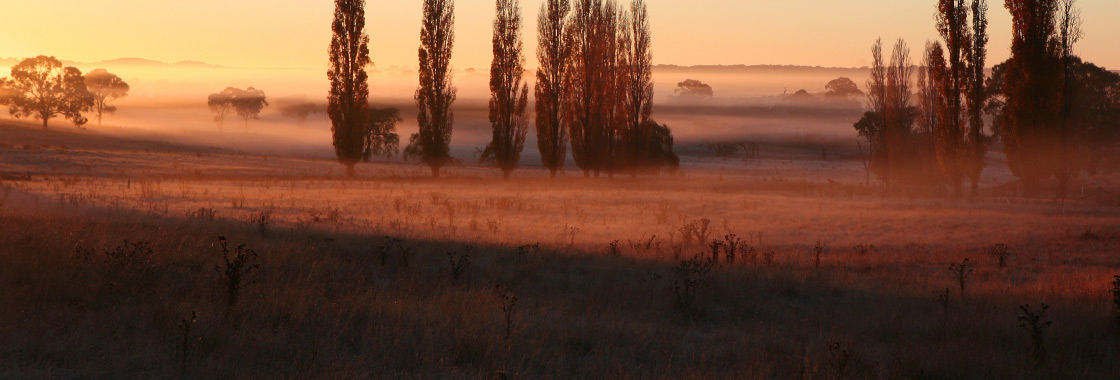
Discover the best places to visit and things to do in New South Wales with our ultimate travel guide. From beautiful beaches, world-renowned wine regions, charming country towns, powdery-soft snowfields and the magnificent outback, it’s easy to plan your next NSW getaway.
New South Wales is a great holiday destination for a romantic getaway in wine country, family beach holidays on the coast or road-tripping to the outback; NSW has it all.
There are plenty of things to do in New South Wales starting with a bridge climb on the iconic Sydney Harbour Bridge. Escape the city with a sojourn to the Hunter Valley for wine tasting at some of the best cellar doors in the region. For a change of place, explore New South Wales’ natural beauty with a visit to the Three Sisters in the picturesque Blue Mountains.
New South Wales’ temperate climate makes it a great state for outdoor activities. Hiking and bushwalking in NSW is a popular activity in picturesque locations such as the Blue Mountains, Bouddi National Park on the Central Coast and Kosciuszko National Park in the Snowy Mountains. If you’re time poor and can’t escape the city, we have 5 of Sydney’s best bush walks within easy reach.
Looking to go camping in NSW and wondering how to find the best caravan parks in NSW? If you’re longing to avoid the crowds, we have the 11 most beautiful secluded camping spots including Green Patch in NSW. While it’s hard to tear yourself away from some of the country’s most popular national parks and their associated camping spots such as the Blue Mountains, be adventurous and head inland to Mount Kaputar National Park, an hour’s drive from Narrabri and be inspired by Dawsons Spring campground, considered one of our Top 10 camping spots in Australia.
The best beaches in New South Wales can be found dotted up and down the coast from Tweed Heads in the north to Merimbula in the south. First time visitors to Sydney will want to head to world-famous Bondi Beach. Head to Hyams Beach on the South Coast renowned for its fine white sand and crystal clear water. Its no surprise Hyams Beach is considered one of Australia’s 10 Best Beaches. In Byron Bay on the North Coast of NSW avoid the crowds at Tallow Beach, perfect for both people and pooches. If you’re after the best spots to snorkel in Sydney we’ve shared the secret spots.
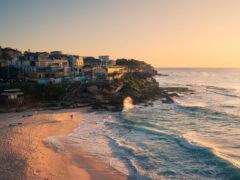
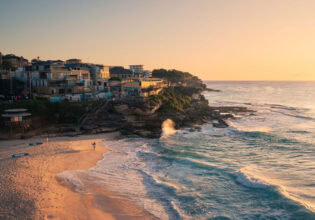
Embark on the iconic Bondi to Coogee walk to immerse yourself in the beauty and wonder of Sydney’s east coast. The Bondi to Coo...

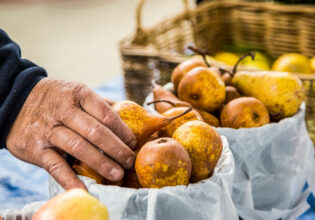
For food lovers and casual browsers alike, these Orange regional markets will fill your basket with the best of the central west. ...


Looking for markets in Merimbula and beyond? We’ve rounded up 12 markets in the seaside village worth driving for. A visit to M...
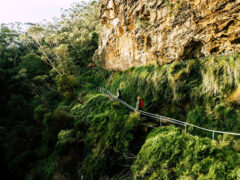

The Grand Cliff Top Walk in the Blue Mountains has opened following years of trail closures and restoration efforts. The Blue Mou...

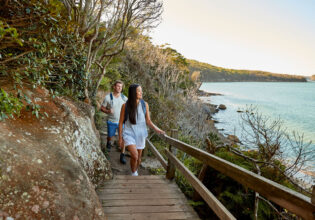
Lace up your shoes and get ready for an outstanding bushwalk, because the Spit Bridge to Manly walk is always an excellent idea. ...
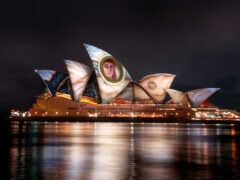

This year’s Vivid is set to shine brighter than ever before, blanketing the city in colour from 24 May to 15 June. Vivid Sydney...
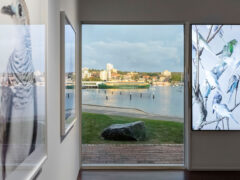

If you’re after the quintessential Sydney coastal experience, Manly is the place to be. Manly’s golden sands, secret beaches ...
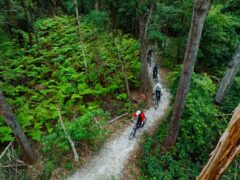
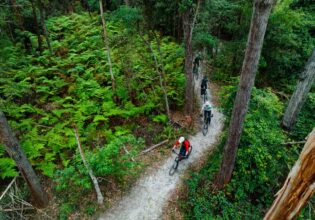
From slurping down oysters knee-deep in briny waters to surfing, bushwalking, golfing and swimming, here is the ultimate guide for...


Known for its proximity to nature, the Sutherland Shire is packed with activities and dining options for the perfect wellness week...


Get ready for six weeks of fashion, premium dining experiences and entertainment at the 2024 Sydney Autumn Racing Carnival. Roseh...


Learn more about the history, lived experiences, and losses of Sydneysiders by visiting these three former defence sites. While m...
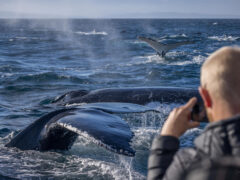
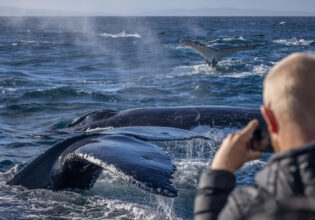
A sighting of these majestic beasts is nearly guaranteed when armed with the right information. Whale watching in Merimbula is mo...
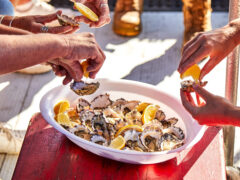
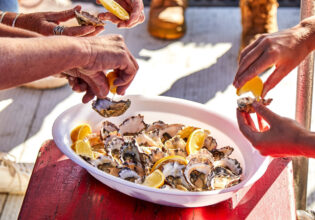
The briny liquid contained in just-shucked Merimbula oysters is like the Champagne of the sea. Gain a new appreciation of this del...
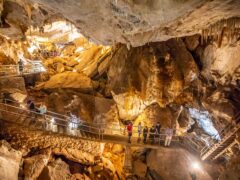
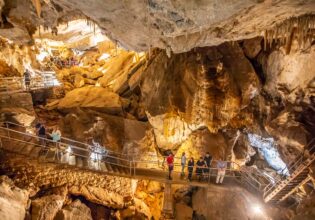
A vast and ancient network of limestone chambers, Jenolan Caves is an unmissable Blue Mountains highlight. This is everything you ...

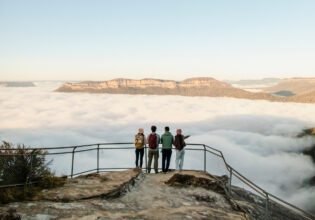
More than just a beauty to behold, the Blue Mountains is a place of activity and adventure, from bushwalks to dining and rejuvenat...

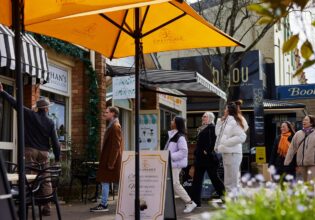
Spend where you stay and take home something special from your mountain escape on a Leura shopping spree. More than simply being ...
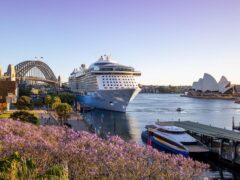

Set sail with this incredible sale from Royal Caribbean around Australia and over the seas. Back to work blues setting in? It's n...


Scenic World Blue Mountains is an iconic experience that lays out the vast and captivating beauty of this World Heritage site in d...
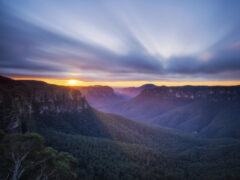
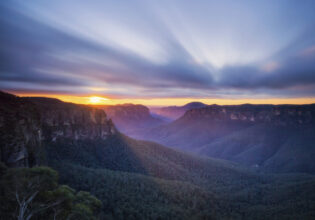
With its mountainside charm and rich community feel, Leura is an idyllic location for an easy minibreak. Should you care to drag y...


Expand your mind and be inspired by the best art galleries Sydney has to offer. Do the imaginings of the world’s avant-garde cr...
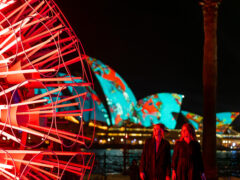
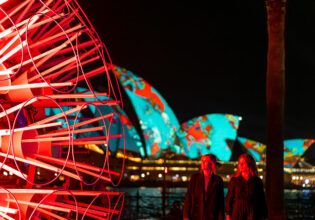
Get your culture fix with our tried-and-tested guide to the best Sydney events. Is it just us or do some of our most cherished ho...
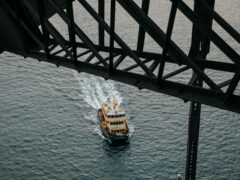
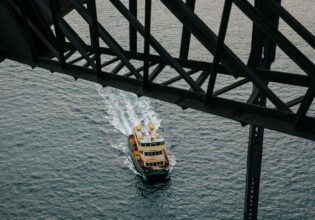
Some of the most magnificent landmarks on Earth arrive as must-see Sydney attractions. The sails, the Coat Hanger, the shimmering...
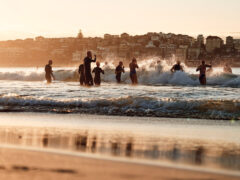
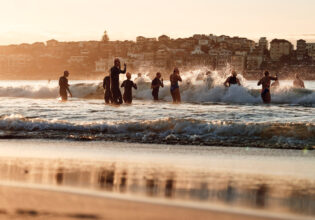
Discover an idyllic sun-soaked paradise with our guide to the best Sydney beaches. While the ever-glistening Sydney Harbour hogs ...


Have you ever watched a game show and imagined yourself dominating? Immersive Gamebox in Sydney is here to put your skills to the ...
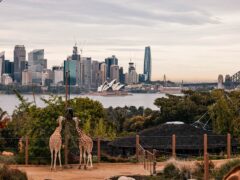
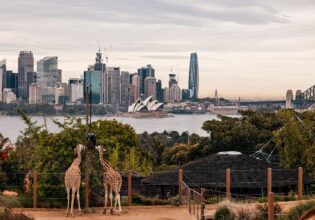
Delight in the world’s most captivating critters at a Sydney zoo or wildlife park. Stepping into any one of the incredible Sydn...
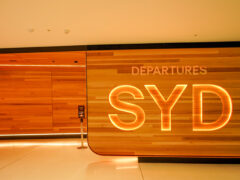
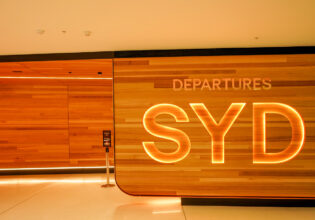
Say goodbye to airport chaos in Sydney… There’s nothing worse than running short on time in the airport and having no idea wh...
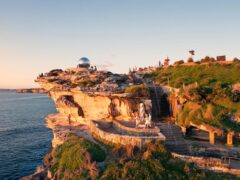

The Harbour City is overwhelmingly dazzling so we’ve whittled down the best things to do in Sydney to enhance every visit. Worl...


Don’t wait for a rainy day to lose yourself in a Sydney museum crammed with insight into life well before our time. You don’t...
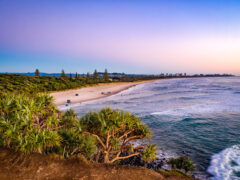
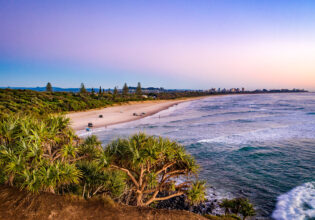
Tweed Heads, quietly making a comeback on the NSW North Coast, now boasts a collection of must-visit attractions, making it a perf...

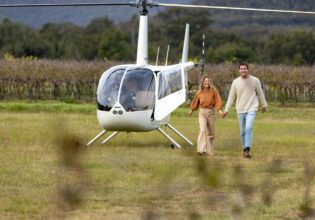
If you’re under the impression that the Hunter Valley is all about booze, think again. There’s a whole range of non-alcoholic,...
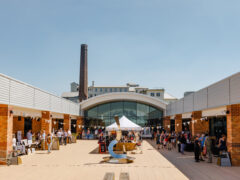

With a collection of weekly, monthly and yearly markets rotating through the Blue Mountains, you’re sure to discover one during ...
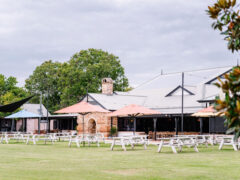
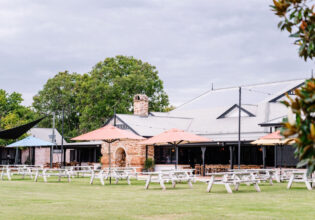
Come away from the Hunter Valley with a new sense of reverence after bouncing between its best breweries and pubs. There are plen...


Australia’s first wine region remains one of its favourites. But even for those of us who know the Hunter Valley well, it still ...
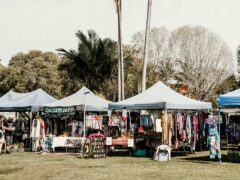
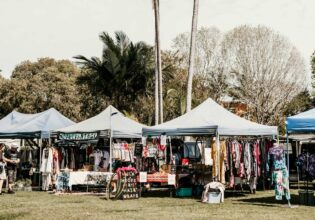
With incredible, locally grown produce and plenty of creatively inclined residents, the Tweed region’s markets are lively, commu...


Uncover some of Newcastle's best parks, eateries and swimming spots that the locals have been keeping quiet – until now. Newcas...
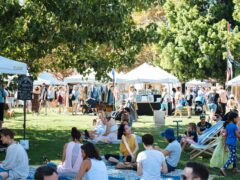
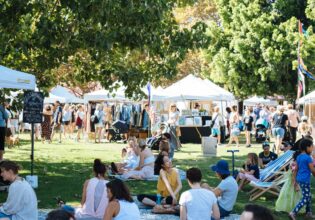
Produce straight from farmers and locally-made goods you won’t find elsewhere – Newcastle’s best markets have it all. For t...


One of Australia’s best wine regions, the Hunter Valley knows how to host a group celebration to remember, no matter what the oc...


Cheese is certainly appetising but a day spa in the Hunter Valley serves as the ultimate pairing to top shelf wine. Romantic retr...


The heritage-listed town of Braidwood is the perfect destination for a weekend away, boasting historic buildings, adventures in na...


With an exciting new exhibition, new culinary offerings and eco-accommodation packages, this NSW South Coast art destination is th...
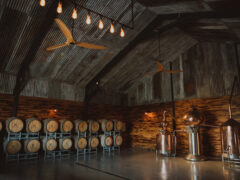
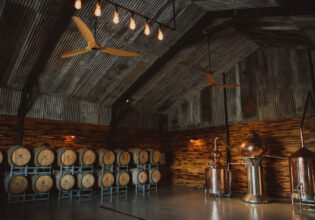
You know the wine so shake things up with a sip-stop at a distillery in the Hunter Valley. Rolling green hills, rose-freckled vin...
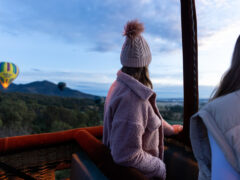
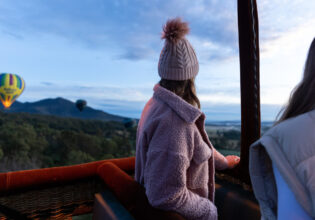
NSW’s Wine Country is known around the world for its flourishing food and wine scene. But there are also so many things to do in...
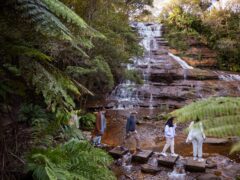
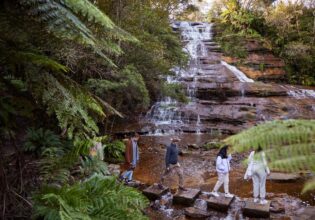
The historic Blue Mountains town of Katoomba is a vibrant, creative enclave filled with attractions from outdoor excitement to cos...

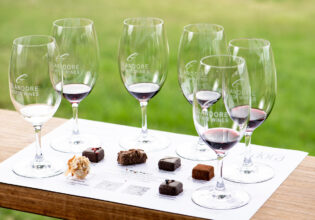
Elevate all that liquid gold with the finest Hunter Valley chocolate and cheese. Milk and cookies. Beer and burgers. Coffee and c...
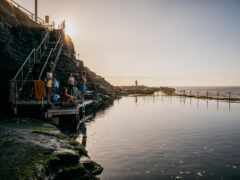

From steel city to city of style, sass and substance, Newcastle is a region that has been well and truly revitalised. Newcastle h...
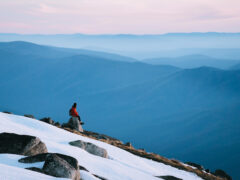
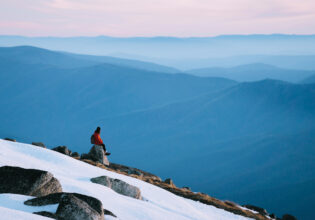
Twist and turn along the Kosciuszko Alpine Way for a journey steeped in mythology and untold adventure. The Kosciuszko Alpine Way...
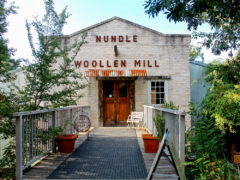
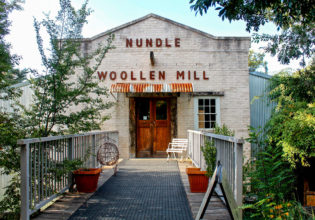
NSW is full of epic road trips to discover... You are spoilt for choice when it comes to road trips in NSW; from the Grand Paci...
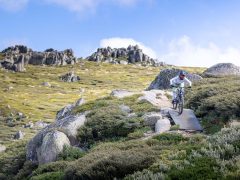
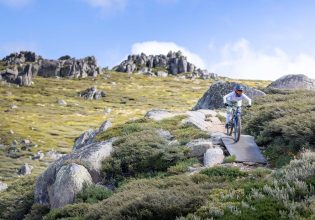
Drawing bigger crowds every season, Thredbo MTB offers thrill-seekers awesome adventure without a snowflake in sight. Love discov...
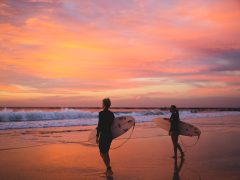
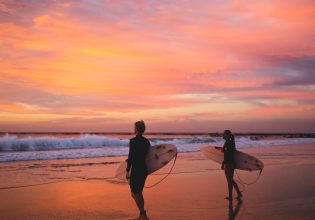
From calm swimming spots to famous surf breaks to iconic lighthouses, here’s your guide to sand-hopping around Newcastle’s bes...
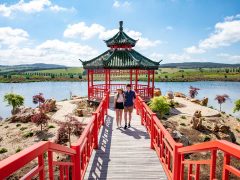
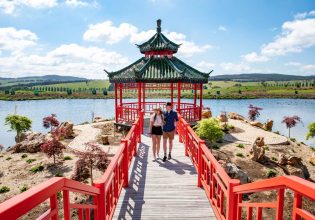
Bathurst is known for motor racing, but if you’re looking for less adrenaline and action, here are the best things to do at your...
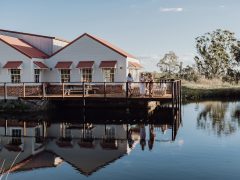

Escape to the rolling hills of Bathurst for a charming and peaceful winery, distillery, and brewery tour, where you can discover u...


From sparkling beaches to stylish bars, sunrise yoga to art and live music, The Shire has something for everyone. There are a lot...
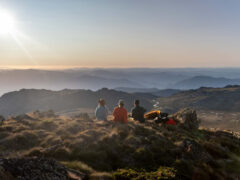

It’s activity central all year round at Thredbo, so use our guide to make the most out of the best things to do all year round. ...


For close to 90 years, the Clarence Valley city of Grafton has been celebrating the arrival of spring with their effervescent jaca...


Melt away a long, hard week with heavenly treatments from a day spa in Sydney. Nothing banishes your worries more than a luxury d...
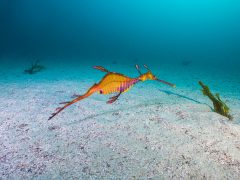
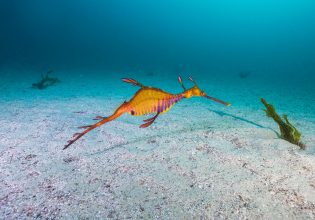
Explore a vibrant collection of coral reefs and underwater marine life with the most exhilarating snorkelling in Sydney. Forget t...
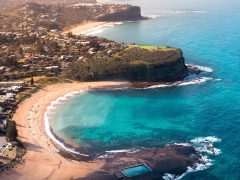
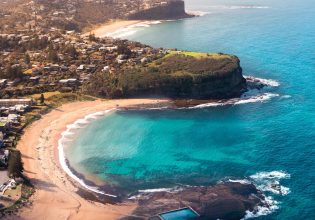
Your weekend search for nearby places to take a dip can end right here thanks to our guide to the very best swimming spots in Sydn...
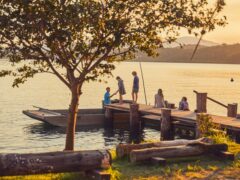
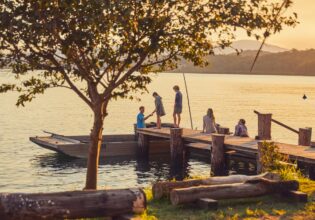
Let us introduce you to the NSW South Coast town that has a little something for everyone. From the waves that draw surfers to t...
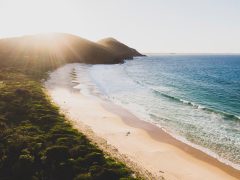
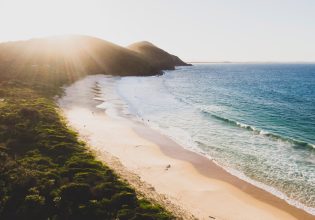
The sleepy NSW beach town you need to know about now. Located in the Pacific Palms region of NSW's North Coast, the tiny township...
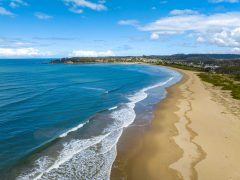
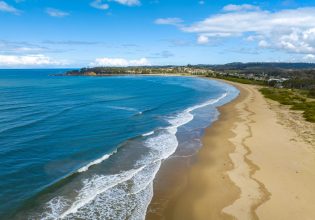
Get beached: Put the NSW South Coast town of Batemans Bay on your radar for your next beachside holiday. There really is somethin...

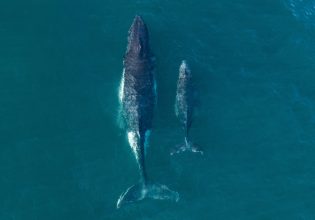
Play I Spy on the ocean’s most majestic giants with our guide to the best whale watching in Sydney. Thousands of whales escape ...

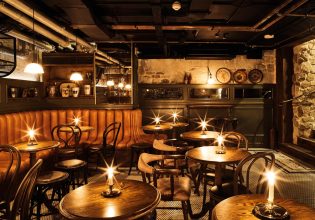
If you can find their entrances, the best hidden bars in Sydney beg you to let your hair down. Quirky decor, legendary cocktails ...
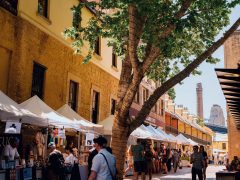
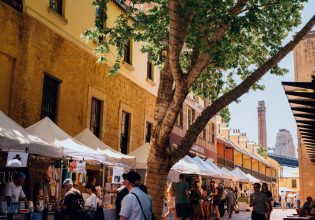
Visiting one, or some, of the best Sydney markets is the backbone of any Sydneysider’s weekend calendar. Whether you’re stock...


All aboard the heritage-famed Kiama Picnic Train, a living museum on rails. Experience the signature steam-hauled return journey ...


Here’s your sign to reconnect with nature in New South Wales’ Minnamurra Rainforest. Bushwalking is the best! How long since ...
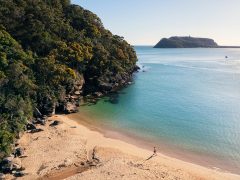
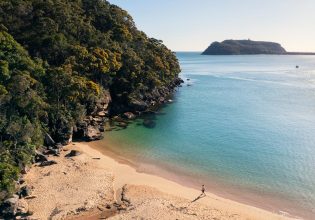
There’s plenty more to hiking Sydney than the Coogee to Bondi trail with breathtaking bush and coastal walks dotting the entire ...

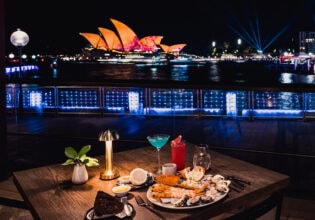
Vivid Sydney is back with an itinerary that's bigger than ever in 2024. Vivid Sydney has become an international sensation. While...

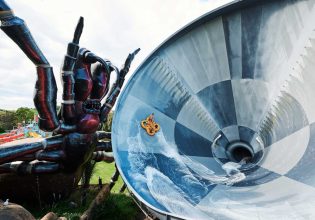
Get ready for an exhilarating family-friendly outing at Jamberoo Action Park. Jamberoo Action Park is NSW’s largest family-own...


Embrace the whimsical, carefree aesthetic of Byron Bay and the world-renowned fashion icons that were born here by foraging for tr...
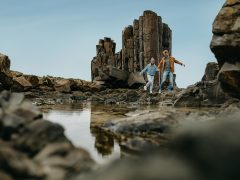
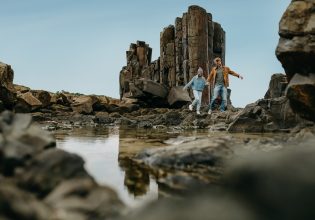
Strolling along the Kiama Coast Walk with the rolling waves and the fresh sea breeze filtering in really is the best feeling. Hid...
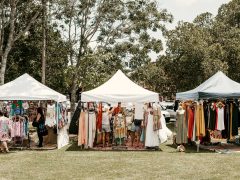
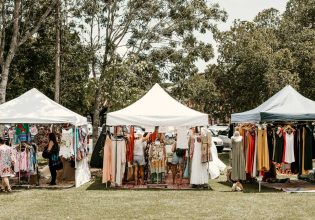
Get to know the creative heart of Byron Bay and surrounds at its many markets. The Northern Rivers might be known for its beaches...


Cocoon yourself in Kiama for a week (or several) and you’ll discover there’s a lot more to this seaside destination than just ...
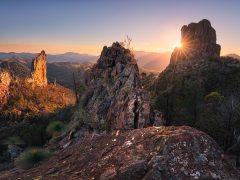

Whether you’re after a quirky lunch with alpacas, a challenging hike or bike ride, or a campfire experience under a canopy of st...


Whether you're getting hands-on or enjoying as a spectator, the art scene in Newcastle is as dazzling as it is diverse. We scoure...

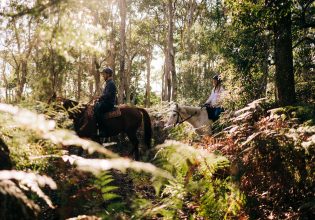
Incredible itinerary fillers for your next Byron Bay getaway. On a holiday to the coastal paradise that is Byron Bay, you are nev...
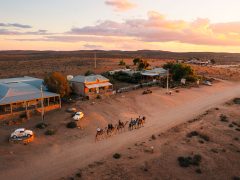
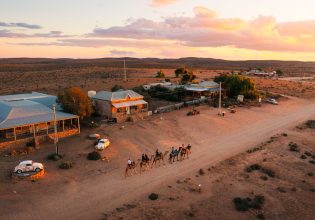
At first glance, this outback town might seem as bare as the desert that surrounds it. But it doesn’t take much digging to find ...
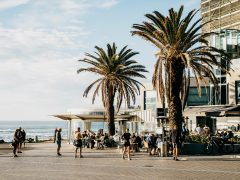

An insider's guide to 10 of the best things to do in and around Cronulla in Sydney's south. Cronulla Esplanade is, in the faint l...
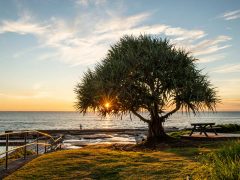
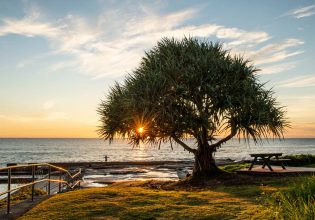
Here’s our guide to what you simply cannot miss when visiting the charming coastal village of Yamba. The seaside village of Yam...
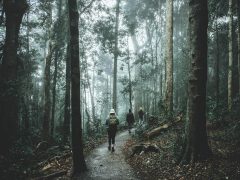

Does it even count as a romantic summer getaway to Bellingen without hiking your way to some swimming holes? Most definitely not, ...
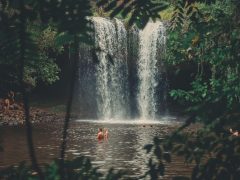
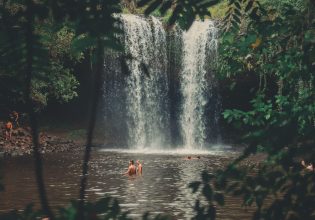
Far North NSW is filled with natural wonders beyond its famous beaches. On your next holiday, it’s worth choosing a day, skippin...
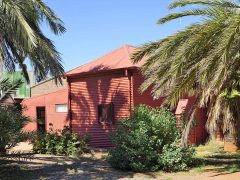
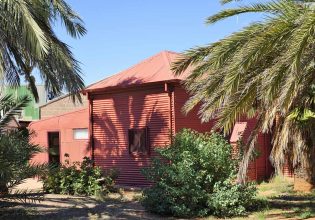
The astonishing story of Broken Hill’s tiny cameleer mosque spans the outback, oceans and generations, as Steve Madgwick discove...


Here are 10 of the best things to do in South West Rocks that you've probably never heard of but definitely should know about. H...

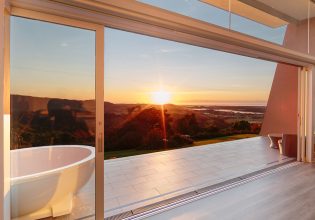
Two hours’ drive south of the Sydney CBD and just five kilometres north of the pretty town of Berry, the exquisite family-owned ...
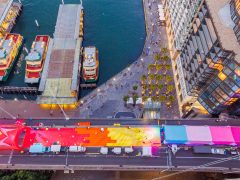
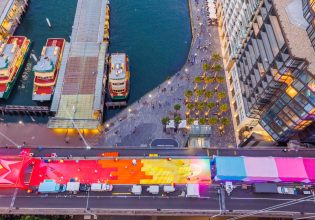
There are a lot of wonderful things to do in Sydney's newly revitalised precincts… you just need to know where to go. The ongoi...
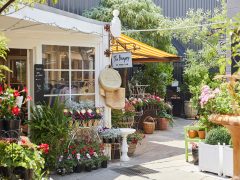
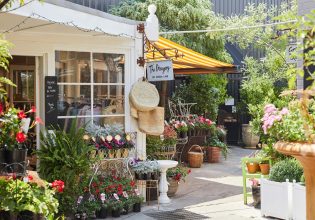
Bowral is the shopping mecca of the Southern Highlands; a carefully curated collection of markets, antique stores, boutiques and b...
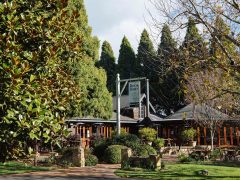

Bowral is bursting with things to do, from living it up in a country estate to trawling for books and antiques and sipping great c...
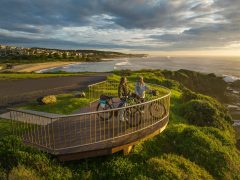
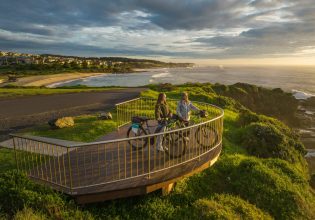
The waters around this Far South Coast town are so blue they seem to have been scissored from a tourism brochure. This may have be...
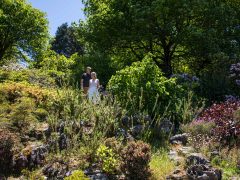
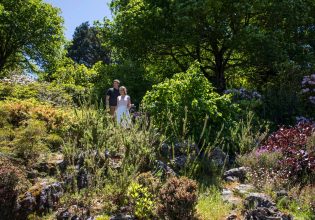
The quaint Blue Mountains township of Leura is a riot of colour come spring, with the blooms, the fresh mountain air and the Devon...
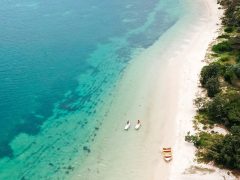
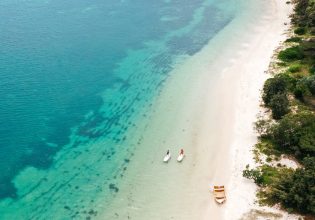
Map out your sun-filled holiday in Port Stephens with this guide to its beaches and bays Flanked by the Pacific Ocean on one side...

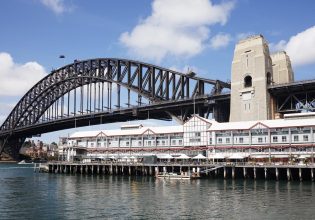
Whirling around Walsh Bay is now more magical than ever. It's time to get in on the action at Sydney’s newest harbourside dining...
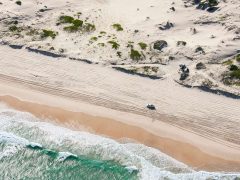
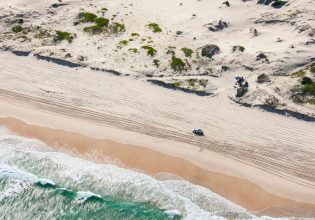
From swimming with wild dolphins and seeing whales up close or hiking to the top of Mt Tomaree through bushland brimming with wild...
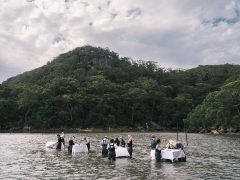
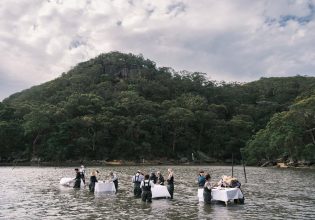
Whether you’re a sun-seeker, an adventurer, a gourmand or a creative – or a family seeking a bunch of different experiences �...
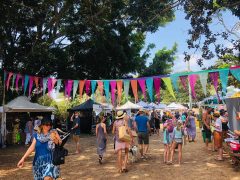
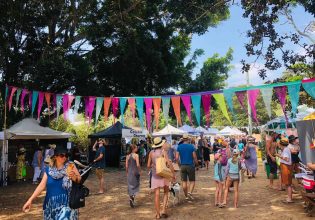
This is your ultimate guide to the best markets on the Central Coast. The Central Coast has some excellent places to eat and some...
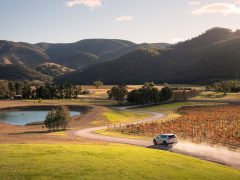

Make the most of your visit to the vineyards around Mudgee with the following wine tours and experiences. Described by Lonely Pla...
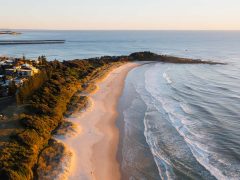
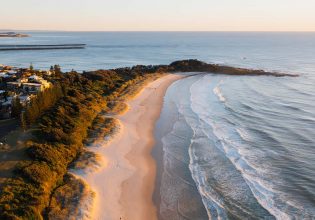
From patrolled beaches for families to rolling surf for experienced surfers and stunning rock pools, here’s our insider’s guid...
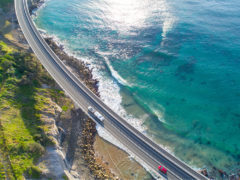
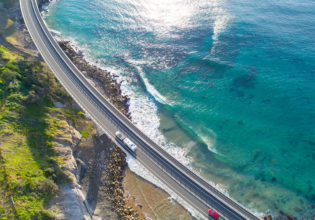
Plot a course around the South Coast of NSW with our itinerary of must-dos. Book some annual leave, throw your bags, kids and dog...
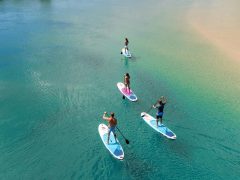
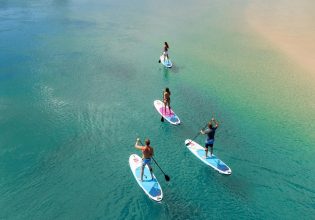
Not everyone enjoys a ‘stop and flop’ type of holiday. Here are the top ways to eat, play and stay on the NSW South Coast. Th...
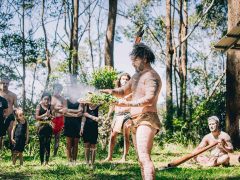
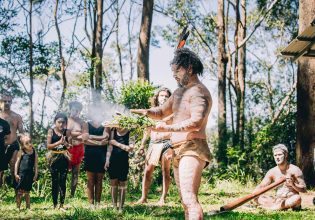
The revival of Gumbaynggirr language has been central to the strong cultural identity evident in the local Indigenous community on...

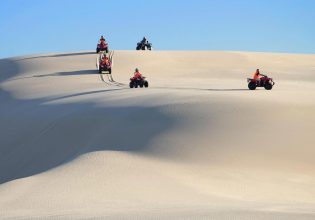
Here is how to hit the Stockton sand dunes in the Worimi Conservation Lands. The Stockton Bight sand dunes stretch 32 kilometres ...
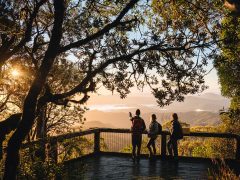
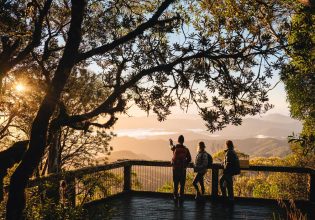
It turns out we've been doing the Waterfall Way all wrong... One of the most magnificent road trips in NSW, the Waterfall Way tak...
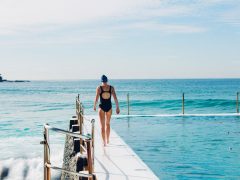
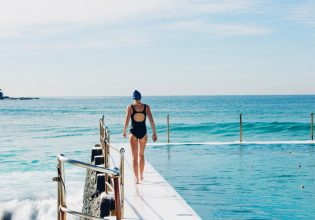
Nestled on the edge of the city's coastline and harbour are a beloved collection of Sydney pools and baths that have been enjoyed ...

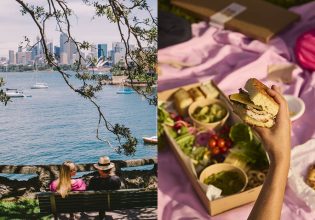
Gather outdoors at these top places for a picnic around Sydney and NSW. Make the most of the sunshine by gathering on a patch of ...
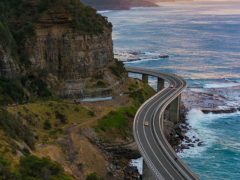
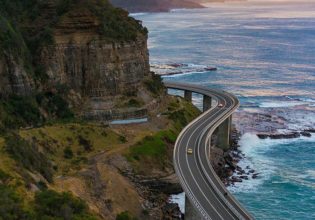
Wollongong is at once grand and gritty and we’ve stitched together some of the best things to do on a weekender. Besides loungi...
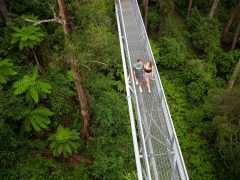
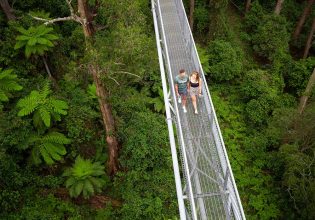
From exploring its rugged coastline, to treetop walks in the hinterland, and adrenalin-fuelled adventure parks, the list of family...


Go for the surf and beaches. Stay for everything else from Indigenous art to swimming with whales. There are waves being made on ...

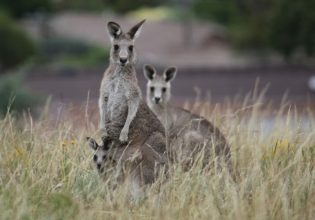
There are wildlife experiences in Jervis Bay that also deliver on creature comforts. From swimming with whales and seals to spott...


Your guide to shopping at the markets and boutiques in Orange and surrounds. Orange is a top spot to engage in a bit or retail th...
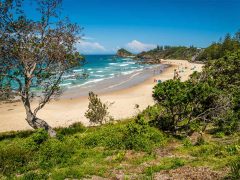
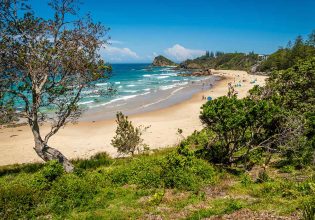
Get into the rhythm of life in Port Macquarie in these toes-in-the-sand hotspots. If you took a fish-eye view of Port Macquarie, ...
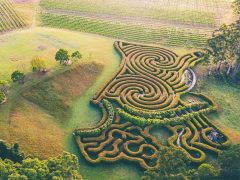
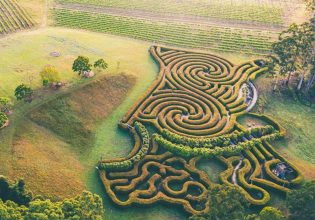
Whether you’re visiting sick koalas in hospital, filling a bucket with fresh fruit at Ricardo’s Tomatoes, or riding a horse al...
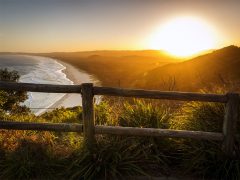
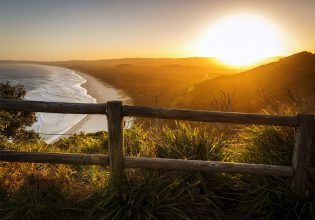
Lace up your boots and head out for a walk or hike to best appreciate Byron Bay. The best Byron Bay walks and hikes are those tha...
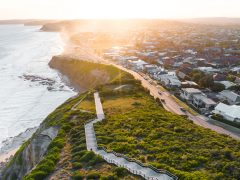

Whether they’re after treetop adventures or skateboard art workshops, Newcastle’s got family-friendly fun for every age group....


This content is password protected. To view it please enter your password below: Password: ...

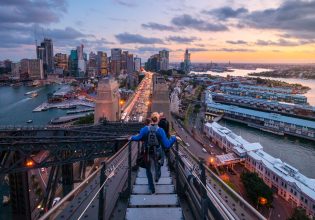
With bridges, parks, roller coasters and a certain Opera House, Australia’s most populous city is one of its most compelling to...
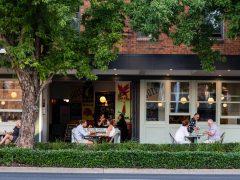

You could fill your entire Orange itinerary with winery visits, but we’ve got a fair few other gems you’ll want to make time f...
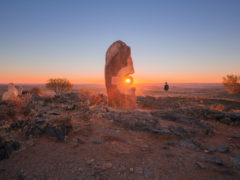
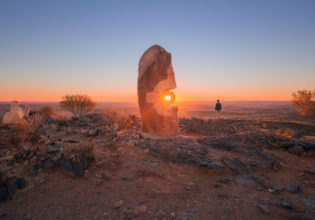
Looking for the quintessential NSW road trip? Drive from Dubbo to Broken Hill on a meander from Central West to Outback through so...
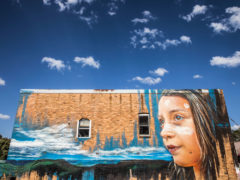
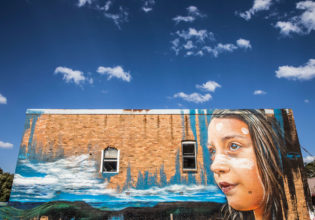
Whether you’re after a coastal drive, the sight of a winding road cutting through a barren landscape or the beauty of mountains ...
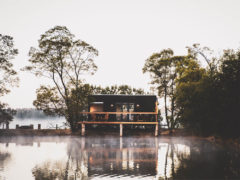
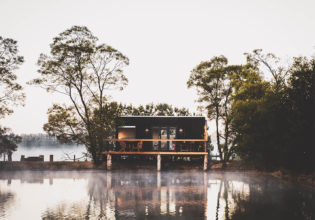
The Southern Highlands hub of Moss Vale has a charming country town feel layered with a collection of seriously stylish stores, ca...
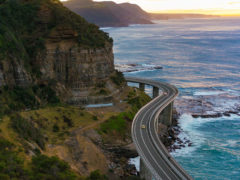

Prepare yourself for sweeping coastal views, a hidden national park, heart-pounding adventure activities and so much more along th...
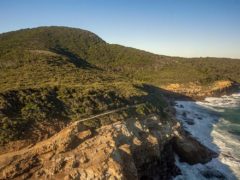
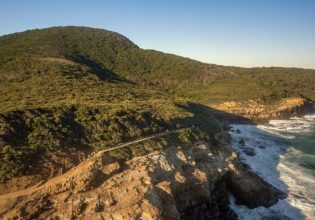
The Central Coast is the ultimate hiking playground – here is everything you need to know. The Central Coast lays claim to pris...


There’s more to Mudgee than just eating and drinking – although there is a lot of that too. Mudgee is well known as one of th...
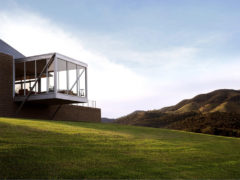
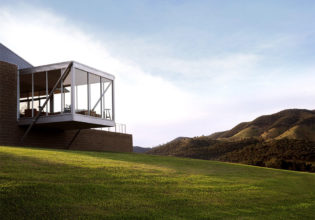
It wouldn’t be a trip to Mudgee without ticking off a few wineries… With a viticultural history that stretches back to 1858, ...
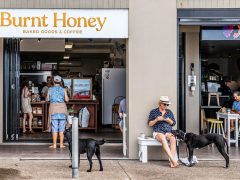
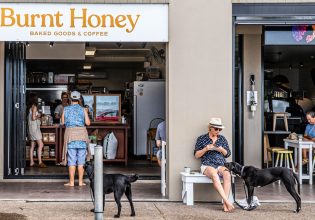
Resisting the allure of the Central Coast’s string of seaside villages is next to impossible once you’ve sampled its summer de...

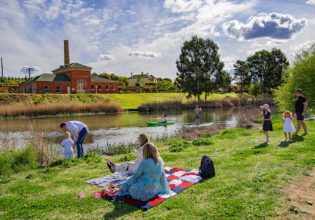
The grand inland city of Goulburn was once a mere stopover for many road trippers, but is now a destination in itself, layering co...
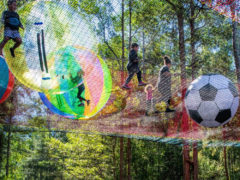

The Central Coast is known for its golden-sand beaches and picturesque nature walks, but did you know it’s brimming with kid-fri...
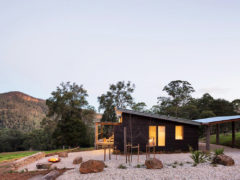
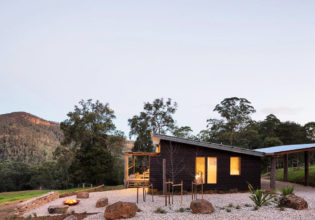
Turning onto the enclaved valley roads of Kangaroo Valley transports you from suburbia to a hidden oasis just outside of Sydney �...

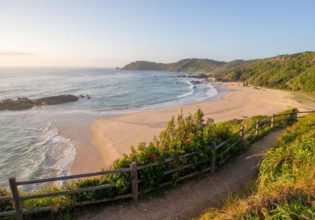
The secret to experiencing the best of Port Macquarie is to venture out on foot. Beaches, wildlife, rainforest and coastal views ...
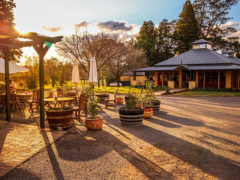
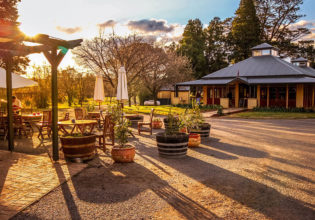
From pinot pioneers to tractorless vineyards and plenty of Italian inspiration. Among the myriad charms of NSW’s Southern Highl...
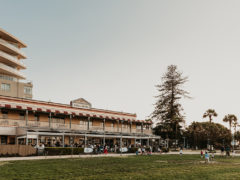
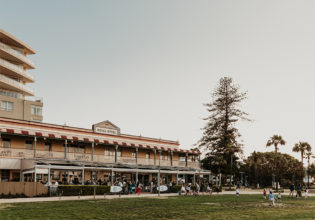
Port Macquarie is famed for its pristine beaches, relaxed coastal suburbs, boutique CBD, lush hinterland and incredible wildlife e...
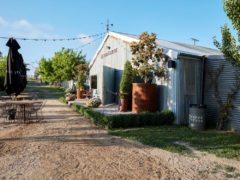

From vineyards with a view to Australia’s only carbon-neutral winery, our pick of the spots not to miss in this boutique, cool-c...
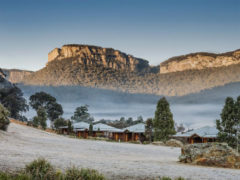
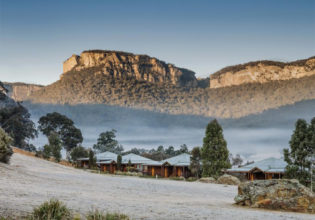
Lush bushland, beautiful mountains and boutique villages – the Blue Mountains region is the perfect backdrop to a romantic weeke...
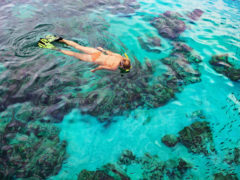

Holidaying with the family is one of life’s great joys. You can spend time away from the chaos of everyday life, reconnecting wi...


From premium fashion to vintage finds to gorgeous homewares, we round up 12 of the best stores to browse while on the Central Coas...
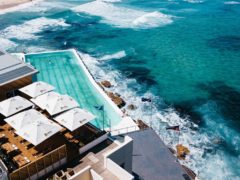
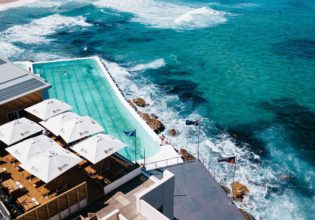
As the weather warms up Sydney turns into a summer playground of festivals, coastal walks and unique experiences. 1. Spend the ev...
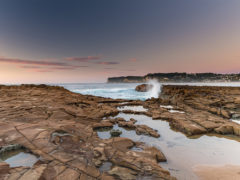
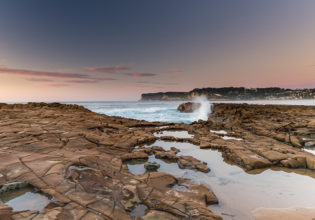
The Central Coast is renowned for its beaches but if you really want to know the best of the best, you ask a local. Here, Megan Ar...


Byron Bay: the land of sun, sand and sea. It’s the place where wandering tourists bask in soul-reviving sunshine – until it st...
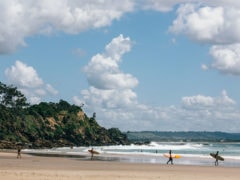
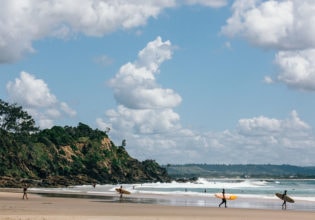
Driving from Sydney to Byron Bay is one of the most iconic drives in Australia. Here's how to make the most of the route over four...
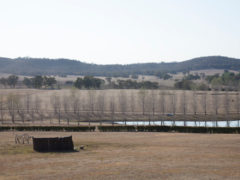
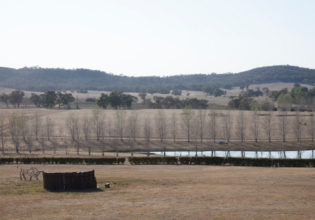
From cellar doors on picturesque vineyards to top restaurants in heritage buildings and boutique accommodation, here’s how to sp...


A dog-friendly road trip around regional New South Wales takes in some of the state’s most spectacular countryside – not to me...
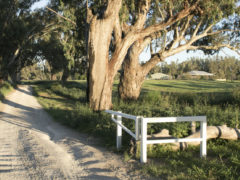

Imagine a city boasting the charm of rural Australian life mixed with rich textured Victorian colonial history… and the expansiv...
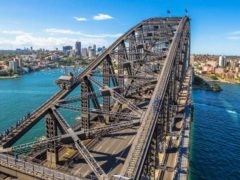

Summer’s almost here, and Friend Number 1036 has decided it’s the perfect time to pay you a visit in sunny Sydney... But unfo...

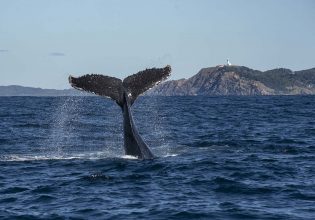
Find out how you can make your whale watching experience extra special in Byron Bay. The whale migration season is one of nature...
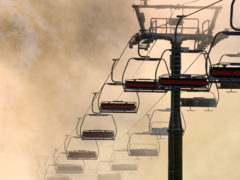
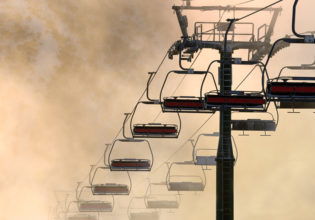
Ever wondered how to go on a ski holiday in Australia on a budget? When it comes to the snow, Australia does it just as well as t...


Dreaming about going on an ethical African safari? Here’s how to experience one in style, in your own backyard. With ...
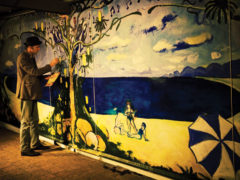
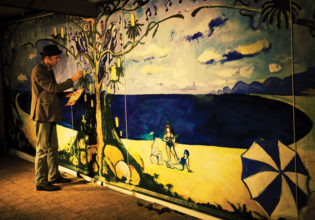
If you feel like you’ve done everything there is to do in Byron Bay, Graham Simmons says think again. His ten best insider secre...


When Australia heads to the coast, Steve Madgwick takes the path of most resistance straight into an outback furnace to discover i...
There are plenty of places to visit in New South Wales starting with a city stay in Sydney, home to the iconic Sydney Harbour Bridge and Opera House. Discover the diverse regions within 3 hours of Sydney such as the picturesque Blue Mountains, stunning South Coast, the pristine Central Coast and world-renowned wine region Hunter Valley ideal for short breaks. New South Wales has it all, from brilliant beaches and pristine national parks to charming country towns and the spectacular outback.
New South Wales’ capital, Sydney is a vibrant city with the stunning harbour at its dazzling heart. Explore the heritage sights; discover the intriguing history and marvel at the spectacular harbour and beautiful beaches that make Sydney a world-class city. Make the Sydney CBD your base or explore in all directions with iconic Bondi Beach in the east, sophisticated Palm Beach in the north, “The Shire” in the south and Parramatta in the west, Sydney’s newest thriving metropolis.
Just 90 minutes drive from Sydney, the Blue Mountains has some of NSW’s most dazzling natural attractions, most notably the Three Sisters. Explore the natural beauty with bush walks for all levels of fitness or visit Scenic World or Jenolan Caves to see the Blue Mountains from a different perspective. There are plenty of things to do and places to stay in the Blue Mountains in quaint villages such as Leura, Katoomba, Medlow Bath and Megalong Valley.
The NSW Snowy Mountains is the perfect holiday destination in any season for the outdoor enthusiast. In the winter months, hit the slopes in Perisher or Thredbo for skiing or snowboarding and in the warmer months explore the region by bush walking, bike riding or hiking. In any season, there are plenty of things to see and do in the Snowy Mountains.
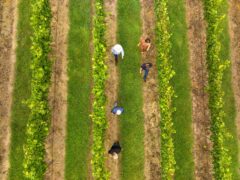
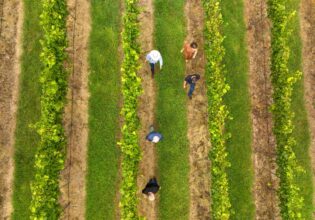
Make the journey to Orange as incredible as the destination with these must-sees along the way. Meandering through the World Heri...


Discover the secrets of the Mountains' natural wonders with this ultimate guide to the best hikes, curated by a local expert. The...

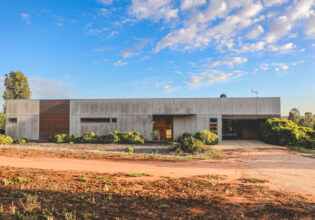
In the Murray region on the border of outback NSW/Victoria, community connection runs as deep as the ancient river flowing through...


From gourmet food and whiskey appreciation to busking competitions and street parades; these New England High Country festivals ar...

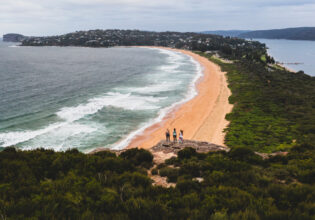
With many of New South Wales’ best beach towns along the route, turning your Sydney to Newcastle drive into an experience is a m...
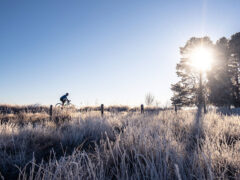

New England High Country has long been known for its beautiful landscape, but is finding favour as a new adventure playground. Whe...
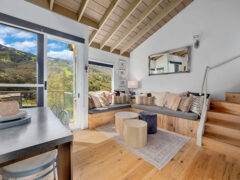

Ditch your regular holiday programming, this is your go-to guide to discover the beauty and thrills of Thredbo in summer. Head to...
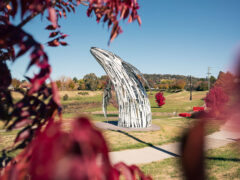

A journey through New England High Country rewards visitors with a wonderfully unique experience of Australian art, culture and hi...
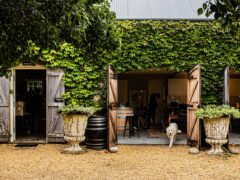
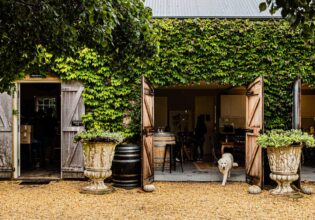
It’s a well-trodden wine region but surprising nooks overflow along our unexpected Hunter Valley road trip itinerary. We’re a...
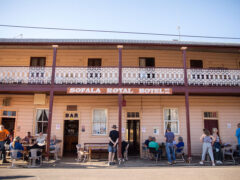
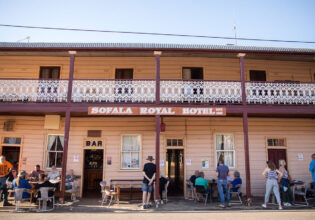
Experience the magic of the gold rush era as you uncover the hidden gems of Sofala – from camping under the stars to enjoying a ...
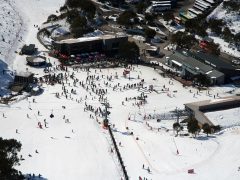
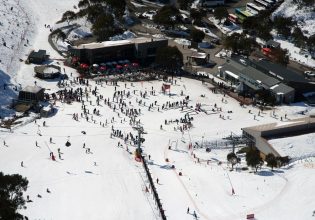
Whether you’re a novice or just craving more from your visit, getting your head around the unique offerings at Thredbo Ski Resor...
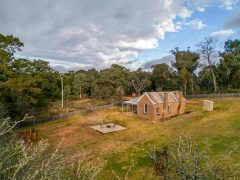

Step back in time and immerse yourself in the rich history of the gold rush era as you discover the quaint charm of Hill End. Nes...


A charming village life, epic all-night parties and intermediate-skewed slopes make skiing in Thredbo a winter holiday favourite. ...
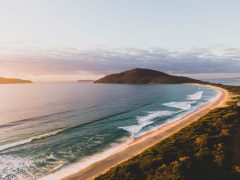
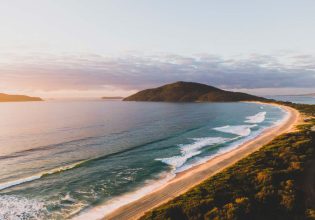
These sleepy towns will reel you in with their underrated beauty and charm. On the Lower Mid North Coast of NSW, the Barrington C...


It may be known as the land of many crows, but Wagga Wagga and surrounds are fast evolving into the land of boutique stays, qualit...


Visiting Byron Bay is just as much about exploring its breathtaking Bundjalung Country hinterland towns as it is about lying on th...
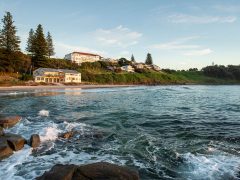
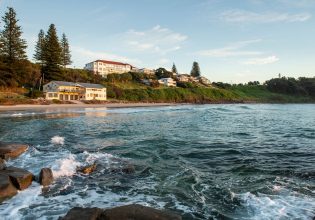
Twenty years ago, if you were looking for a laid-back beach holiday in New South Wales, Byron Bay was your best bet. But with Byro...
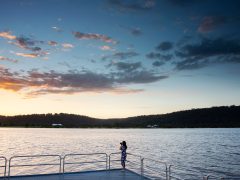

The stretch from Yamba to Coffs Harbour might be short (just under 1.5 hours), but there are some great little stop-offs worth con...


Surf beaches, nostalgic coastal towns and dense tropical wilderness – the road trip from Yamba to Byron Bay really does have it ...
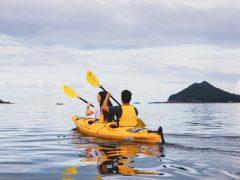

Driving from Sydney to Yamba might involve winding along the NSW coast, but if you stick solely to the Pacific Highway you’ll ac...


When travellers say their holiday was a trek, you usually imagine the worst. But on Lord Howe Island, nothing could be better. Yo...
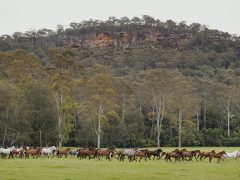
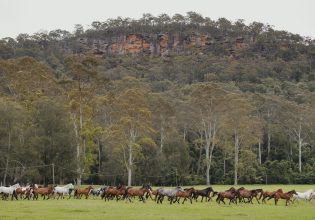
See a different side to the Central Coast by cruising along Tourist Drive 33: a lesser-driven road that winds through the hinterla...

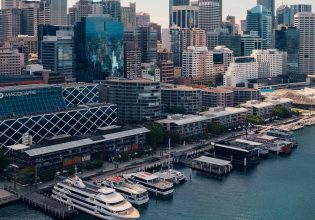
Find out where to stop, stay and play along the Pacific Highway. A Brisbane to Sydney drive (or the reverse) is a rite of passage...

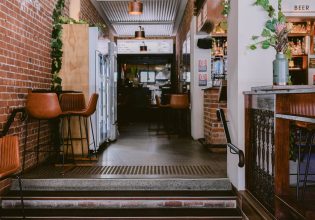
Nestled in the Macintyre Valley, the Sapphire City of Inverell is a historic New England town with one of the state’s biggest la...
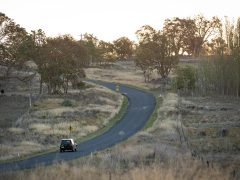

Halfway between Sydney and Brisbane, the New England town of Uralla has lots of country charms to share in its wide and welcoming ...
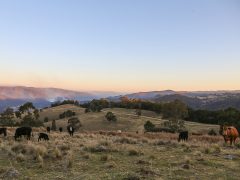
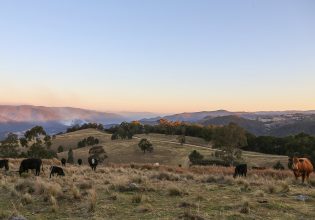
The ‘birthplace of the nation’, Tenterfield is a town that’s both full of history and looking ahead to the future. The nort...
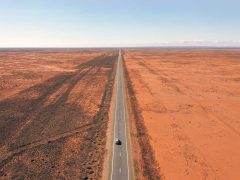

Broken Hill is the most diverse, inclusive, arty and vibrant outback settlement in Australia, states Steve Madgwick. It is for the...
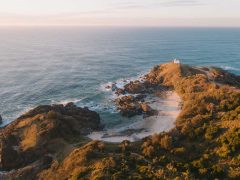
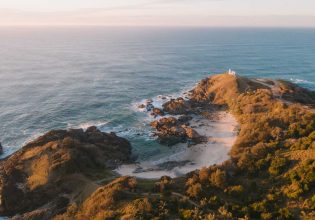
Beyond its beautiful beaches, Port Macquarie is now known for its sophisticated food and wine scene, as well as its sustainability...

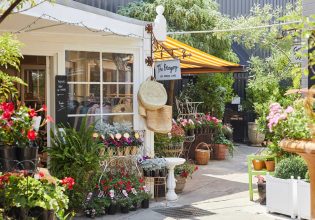
Award-winning pies and vintage pieces have helped cement this Southern Highlands town’s reputation as a hotspot for weekends awa...
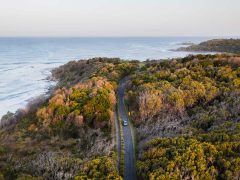

The arrival of its first boutique hotel has helped usher in a new era of cool for Yamba. But the appeal of this quintessential coa...
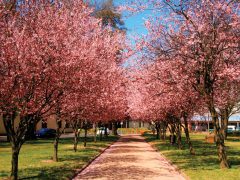
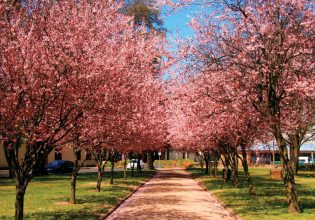
Rockpool-trained chef Dom Aboud moved from Sydney to Orange in 2019 to head up The Union Bank restaurant. He serves up some sugges...
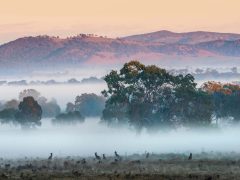
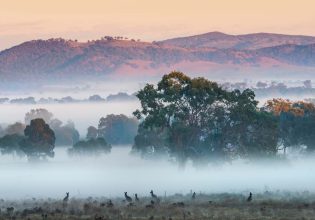
Much of the magic of Mudgee has to do with the fact it offers a proper escape to the country, with all the trimmings. Find out why...


While its holy trinity of sun, sand and sea makes this NSW South Coast hamlet a perennial favourite of day-trippers and summer hol...
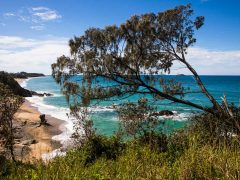

In addition to its pretty coastline and perfect latitude, the Coffs Coast has an abundance of innovative places to lap up the suns...
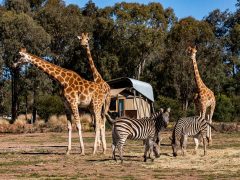
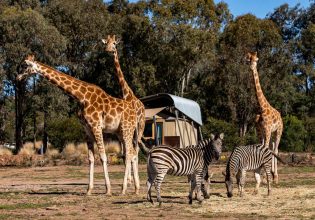
Bridget Kaitler wakes before dawn each day to start work at Taronga Western Plains Zoo in Dubbo. The zoo is one of the top reasons...
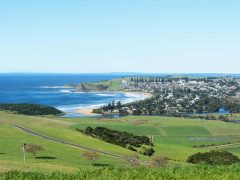
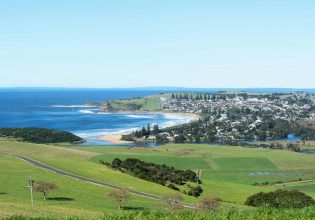
Find a sweet spot in this breezy beach town nestled between green coastal pasture and the Pacific Ocean on the NSW South Coast. He...
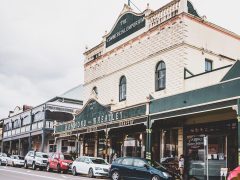
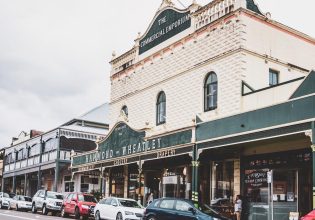
With its lush, green landscape folding into a quirky, historic townscape, there’s a certain magic to this hinterland hub that sp...
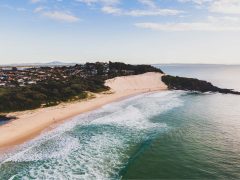
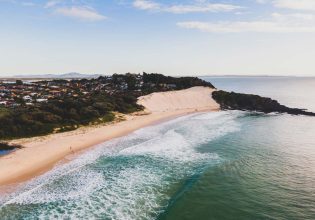
An archetypical Aussie holiday town defined by its lakes and beaches, Forster is a recipe for recreation and relaxation. One of th...


No need to choose between beachside bliss or country charm. Berry offers the best of both worlds, which is why it came in at no. 2...


Increase your chances of spotting whales (and dolphins!) in Port Stephens with this handy guide. Port Stephens is an aquatic wond...
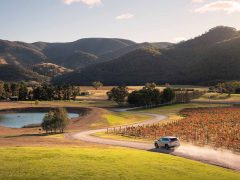
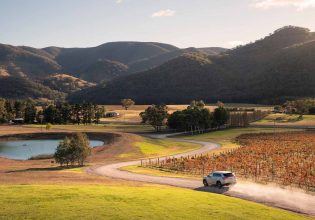
A road trip to Orange or Mudgee is both an escape to the country and a delightfully wine-fuelled weekend. But is it possible to ch...
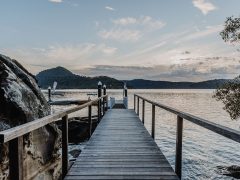
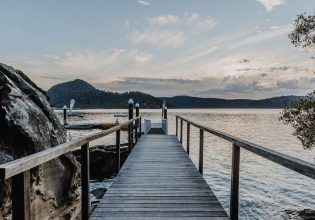
There’s something to be said for travelling close to home, as Sydneysiders discover when they holiday in and around the Hawkesbu...


Spend a long weekend in wine country in the Mudgee Region where food, wine, arts, culture, sports, leisure and nature intersect. ...

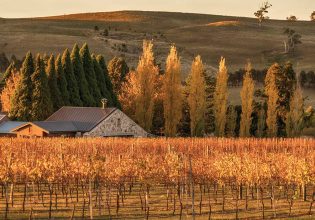
Berrima has boundless charm and is surrounded by some of NSW’s loveliest landscapes. The historic village of Berrima is Austral...
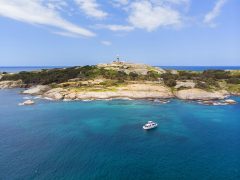

The NSW South Coast is brimming with secret pockets of adventure and relaxation. Here are a bucket list load of tips to make you f...
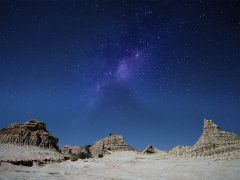
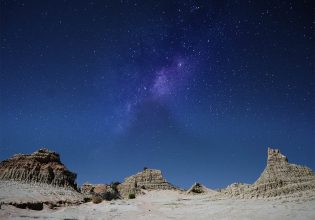
The ancient landscapes here must be seen to be believed, but they are just the beginning of what makes this outback NSW national p...
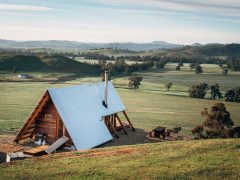
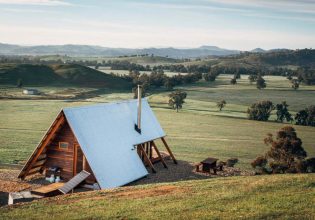
Here’s how to make the most of an inland road trip between Sydney and Melbourne. Driving the route from Sydney to Melbourne is ...
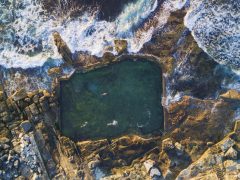
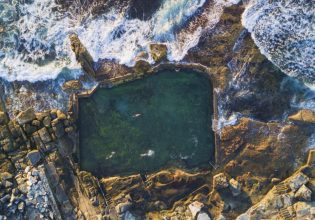
Need a dose of vitamin sea? Take a dip in some of the best ocean pools in NSW, which are dotted up and down the coast. If your ne...
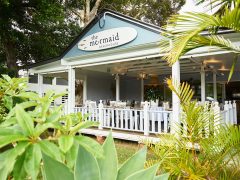
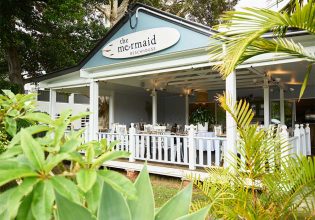
One of the simplest ways to reduce your carbon footprint while on the Coffs Coast is to support destinations and businesses that a...
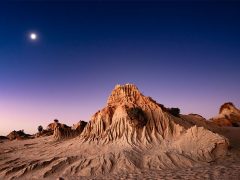
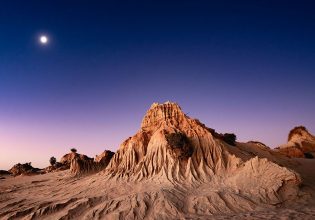
If you’re in search of a holiday without the crowds, consider these lesser-known gems of NSW. With so many beautiful beaches, ...
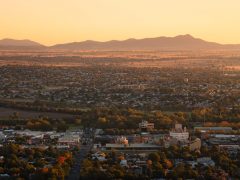
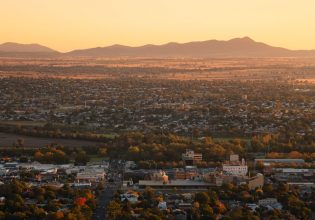
A road trip to Queensland is a New South Welshmen must-do. But for some, the well-beaten Pacific Highway is more of an over-do. H...
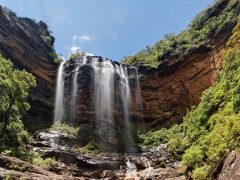
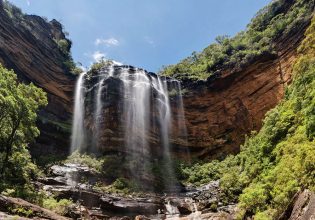
Here are 11 waterfalls in the Blue Mountains worth travelling for. Be it a roaring torrent of white water tumbling into a ravine ...
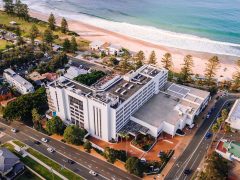
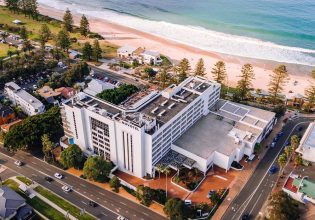
From glamping getaways to hotels with all the mod cons and cute-as-a-button cabins, here are some of the best Wollongong accommoda...
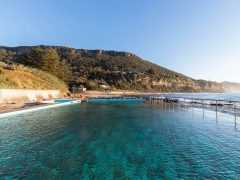

Wollongong is awash with places to swim, making it one of NSW’s greatest seaside cities. From sun- drenched sea pools, to low-t...
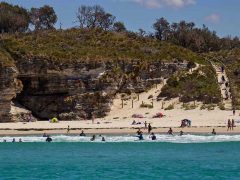

Discover more about Jervis Bay by exploring it via land and sea. To explore all 102 square kilometres of the bay and village, whi...
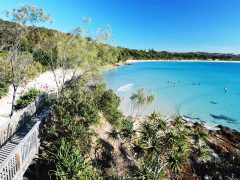

Whether you're into building sandcastles or catching waves, Byron Bay has a beach for you. When it comes to great beaches, Byron ...
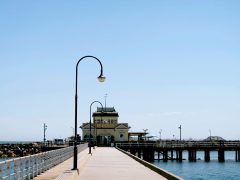

From quirky neighbourhoods to iconic sporting venues to graffiti-daubed laneways, the Victorian capital is a riot of activity and ...
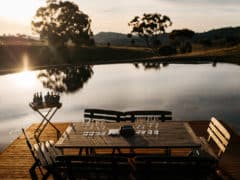
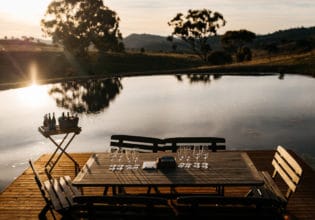
Plan your escape to Mudgee for a romantic weekend in NSW’s prolific Central Ranges wine region. There is something about escapi...
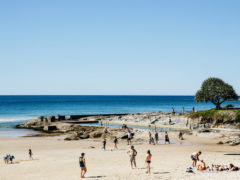
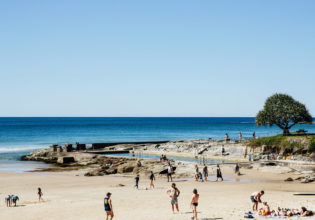
Elise Hassey showcases the essence of Yamba - one of New South Wales' most iconic coastal haunts. With idyllic weather and temper...
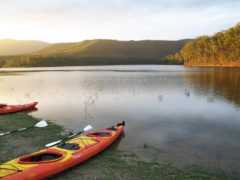

From kayaking and wild swimming to wineries and waterfalls - here are the best things to do in Kangaroo Valley. The patchwork qui...
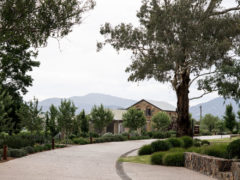
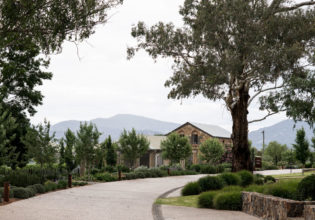
From unforgettable station stays and a long list of top-notch eateries, to the picturesque countryside in Australia's Country Musi...
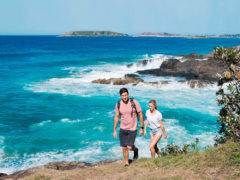
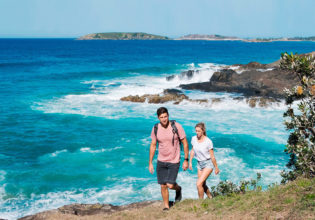
Between two humble beachside hamlets on NSW’s Mid North Coast – Red Rock in the north and Urunga in the south – lies 70 kilo...
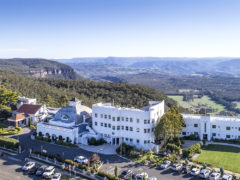
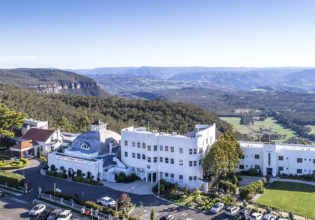
You’ll need more than one weekend to uncover the natural beauty, culture and culinary delights that await you in each of these B...
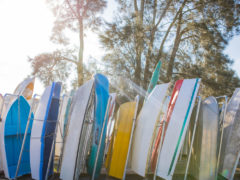
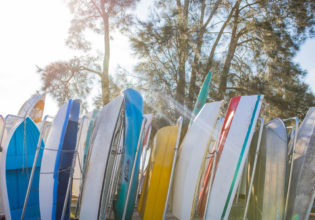
The Central Coast is a sprawling region comprising of pristine beaches, leafy hinterland, and quaint and cool coastal towns. It’...
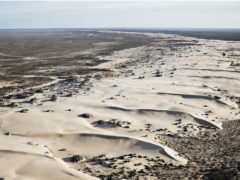
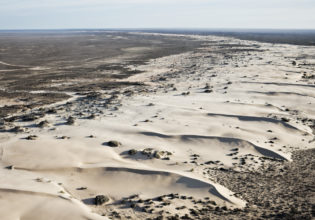
NSW’s Lake Mungo mesmerises visitors with its otherworldly beauty and astounding ancient history. It has set the scene for megaf...
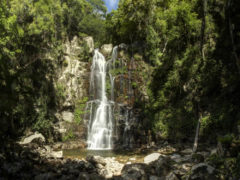
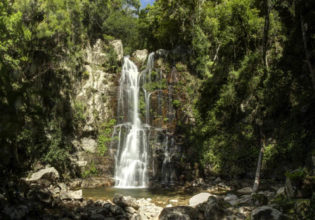
Just a 90-minute drive from Sydney and chockful of things to see and do, we know that Shellharbour won’t stay under the radar fo...
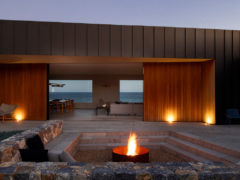
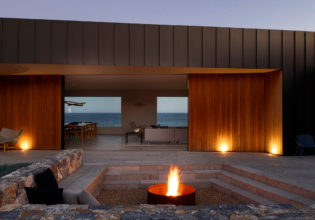
The NSW South Coast town of Kiama might be most famous for its natural attractions, but these days there’s a whole lot more for ...
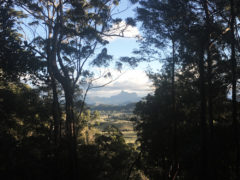
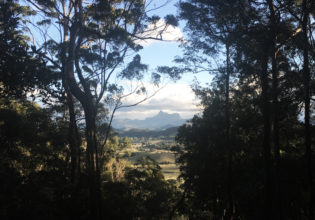
With a secluded retreat designed for maximum relaxation, a fantastic regional art gallery and next-level produce enriched by volca...
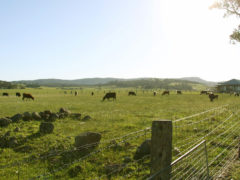
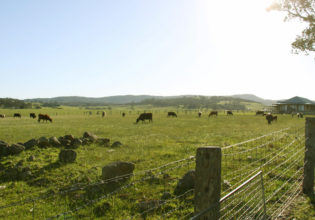
With a thriving food scene and a strong sense of community, there’s no denying the charm of New South Wales coastal darlings Mil...
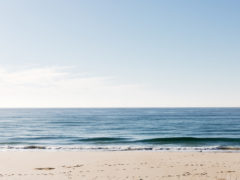
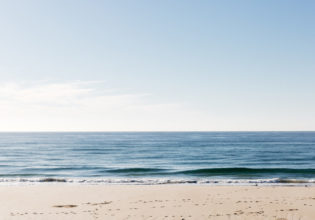
Heading south, David Levell takes in the beauty and simplicity that is the NSW coast. (more…)...
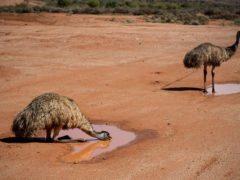

To journey into the heart of outback New South Wales is to find the Australia depicted in movies; a moon-like landscape, home to o...
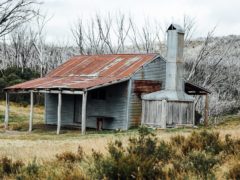
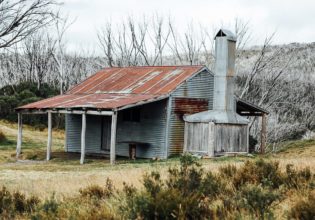
You don’t need sugar on top to enjoy the sweet surrounds. The hidden villages and fantastic local produce make for the perfect S...
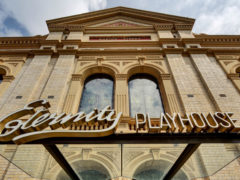

Compelled over decades to chalk ‘Eternity’ on the city streets, Arthur Stace has gone down in history as a Sydney folk hero. ...


Beyond the Blue Mountains nestles a garden of significant beauty and ambition that’s enough to turn the blackest thumb into an a...
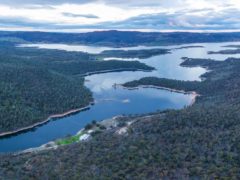
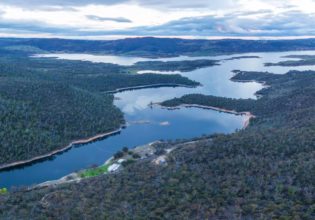
Forget the Lost City of Atlantis. Head to Lake Jindabyne in NSW if you want to be among the lucky few to see relics rising from th...
You’ll find options in New South Wales to suit every budget from camping and caravan parks, budget hotels to beachside resorts, boutique hotels and luxury accommodation.
Wondering where to stay in NSW? Whether you’re planning a family holiday, city break, adventure holiday, romantic getaway or luxury experience there is a destination to suit every style, from a coastal holiday in Byron Bay, to a rural retreat in Orange, New South Wales has the perfect accommodation to suit your style and budget.
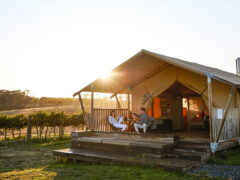
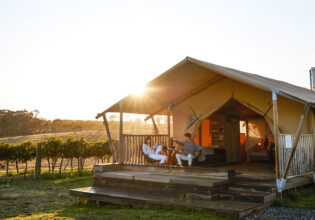
Temper your touring of Orange’s viticultural delights with a stay amid the great outdoors. While wine touring may be the big dr...
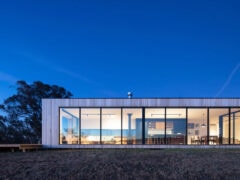
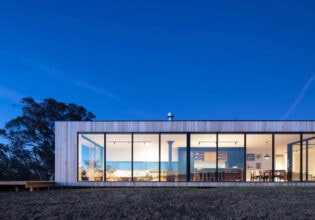
Country comfort is given a stylish glow-up at these charming Airbnb abodes in Orange. With its city limits propagated with world-...


From a retreat in a historic nunnery to sprawling resorts and contemporary builds with jaw-dropping views, Leura accommodation is ...
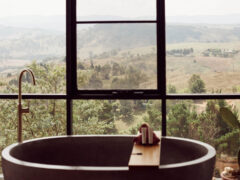
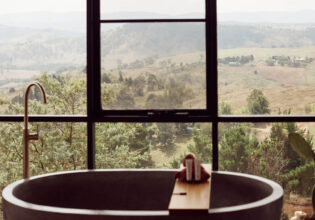
From covetable cabins to contemporary hotels, you’ll find the mountain retreat of your long weekend dreams in Blackheath. Black...
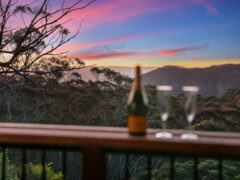
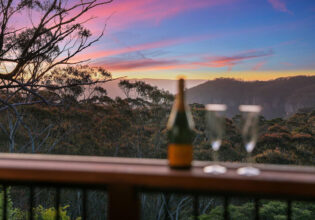
Base yourself at one of these incredible Katoomba stays as you discover the stunning Blue Mountains beyond. The Gateway to the Wo...

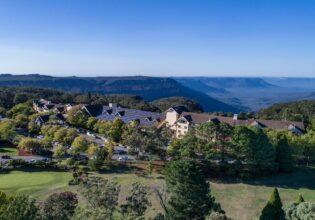
For the ultimate family-friendly accommodation in the Blue Mountains or a getaway with friends, the Fairmont Resort Blue Mountains...


Ever wanted to wake up to unimpeded views of the Sydney Opera House? We spent a night in the luxurious Park Hyatt Sydney to do jus...
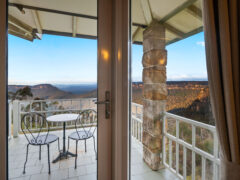
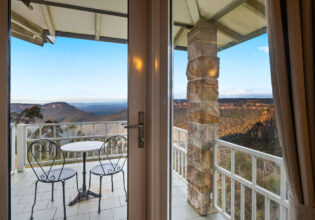
Drop your bags and absorb the incredible Jamison Valley views from your room at the luxe Echoes Blue Mountains. From watching the...


Located a brisk mountain walk from the famous Three Sisters in Katoomba, Lilianfels Blue Mountains Resort & Spa is one of the ...
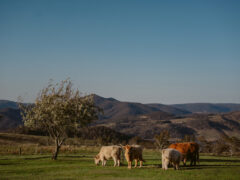
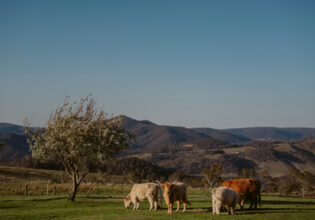
Lean into country style at Seclusions Blue Mountains, where cosy timber cabins are purpose-built to encourage romantic notions. A...
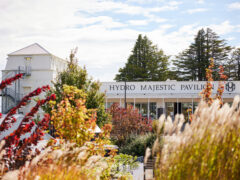
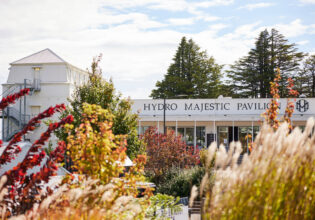
As far as legendary hotels go, the Hydro Majestic Blue Mountains is one of the best known, with accommodation that blends history ...
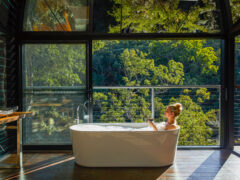
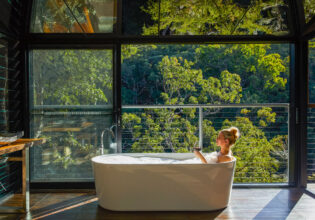
From luxury hotels to family-friendly resorts and stylish holiday homes, we’ve listed a selection of the best accommodation in t...
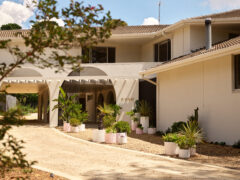
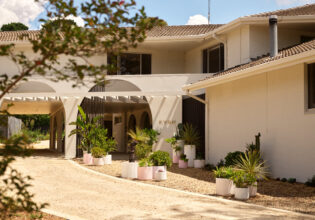
In the bohemian village of Blackheath lies Kyah, a sleek and stylish hotel that is just as ideal for families as it is for cool an...
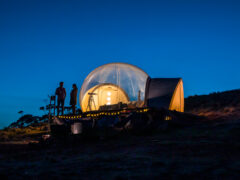
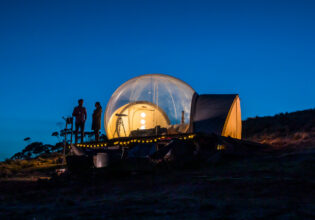
With vast national parks pocketed with idyllic spots to pitch a tent, camping is one of the most immersive ways to experience the ...
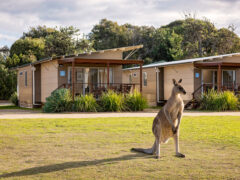
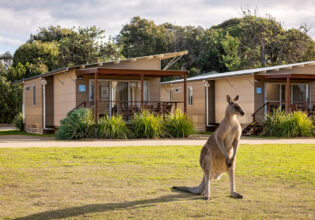
It’s time to literally park your travel plans with a stay in one of the following Merimbula caravan parks. Merimbula caravan pa...

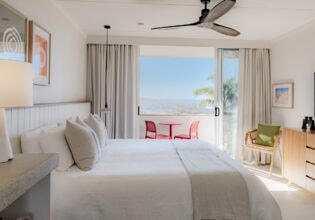
The best Merimbula accommodation is all about proximity to the waterways that serve as a playground for visitors to the seaside to...
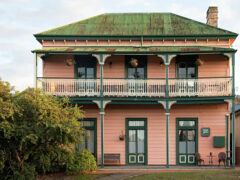
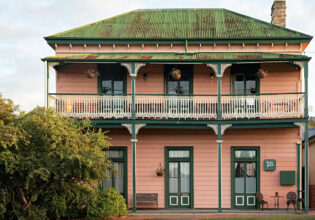
The Sapphire Coast makes a case for an immersive break with our guide to Merimbula’s best Airbnbs. Finding a Merimbula Airbnb ...
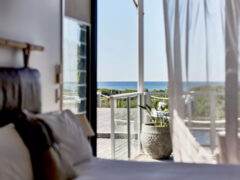

A slew of great new places to stay in Newcastle should inspire a visit to NSW’s steel city. You would have come up short if you...


Explore our pick of the best places to stay in Newcastle to suit every type of traveller. Whether you’re in town to soak up the...
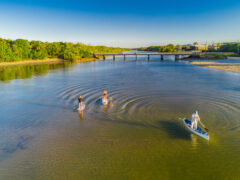

From the river to the rainforest and sparkling creeks to long, sandy beaches, Tweed Heads and her surrounding towns offer holidaym...
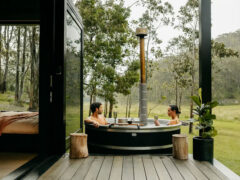
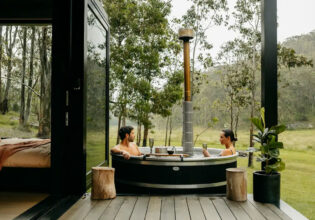
Sift through our top Hunter Valley Airbnb picks for a mix of romantic, luxury, family, pet-friendly and group getaway options clos...
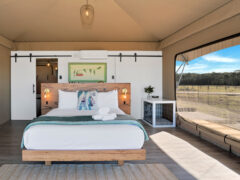
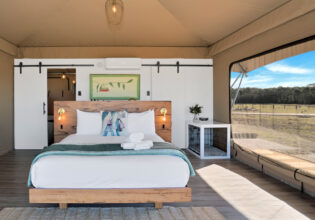
Save on accommodation and pour more pennies into wine with a Hunter Valley caravan park stay. Dreaming of blazing sunsets spent g...
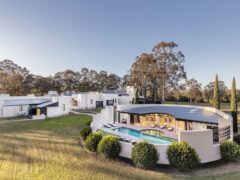

Visit cellar doors for tastings, sample the region’s culinary delights and then book into the best luxury accommodation in the H...
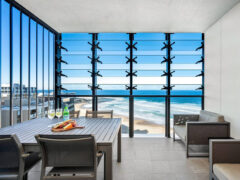
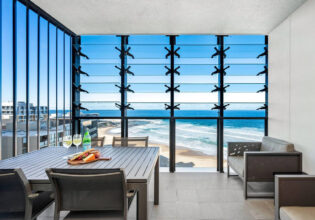
Pull away from the grey of the highway to the green of the countryside and blue of the sea at one of these great Newcastle Airbnbs...
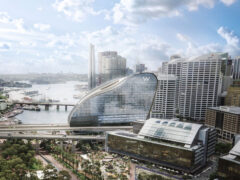
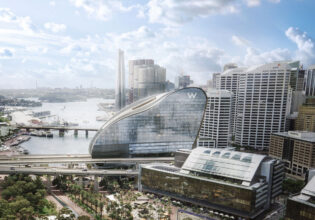
The highly anticipated W Sydney opened its doors on 12 October, becoming the third W hotel on Australian soil. As soon as you ste...

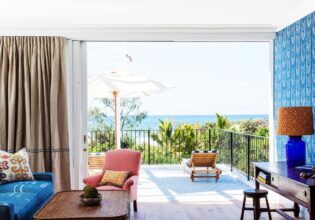
Scattered with retro cool motels, hinterland hideaways and resort-style escapes, the Tweed is full of incredible accommodation fro...


'Luxury’ is a term easily thrown about, but often poorly executed. Now Crown is rewriting the rulebook on the luxury hotel exper...


Penrith’s first five-star hotel has opened. We check in to the Penrith Sydney Pullman to see if it lives up to its rating. The ...


Whether you’re a seasoned caravanner or looking for a budget-friendly yet fun place to park up and call home on your trip to Bat...
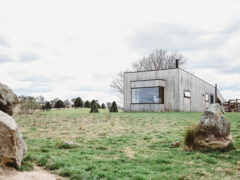
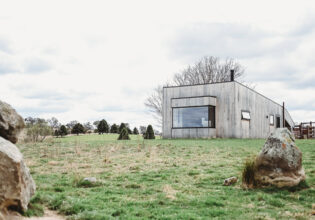
From impressive historic hotels to cheerful modern motels, Bathurst offers a diverse smorgasbord of accommodation options sure to ...
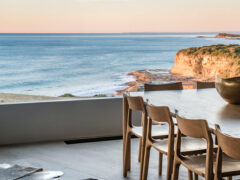

Check in to these fantastic Kiama Airbnbs to make the most of your seaside holiday and create cherished memories with friends and ...


Backpacking in Byron is a breeze with these hostels. The best Byron Bay hostels are those with convivial communal areas, clean an...
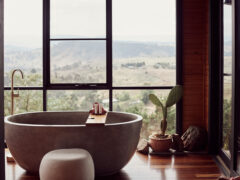
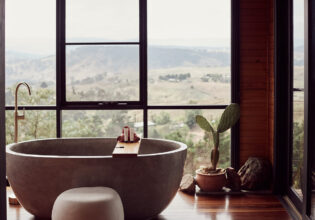
Cosy retreats don't get more idyllic than these cabins in the Blue Mountains. Regardless of the season, a cabin in the Blue Mount...
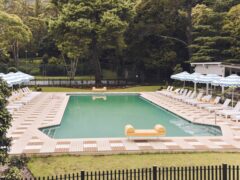
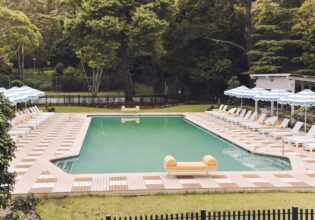
Jamberoo is a wonderful rural village where one can simply retreat from the fray. Come see the historic buildings, explore its nat...
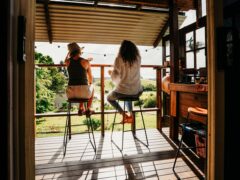

Camping is the quintessential old-school Aussie getaway. Here’s where to park your caravan or pitch a tent in Byron Bay. The be...
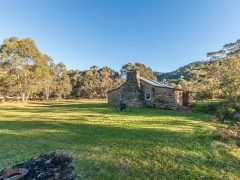
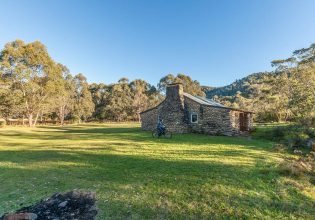
Weary heads will delight in a blanket of stars and swaying snow gums scattered throughout the best Thredbo camping destinations. ...


Crown Towers Sydney stands as a sky-scraping jewel on the waterfront of the Harbour City, steadfastly reflecting her beauty from e...
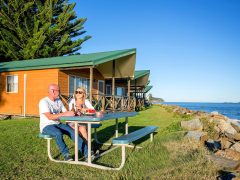
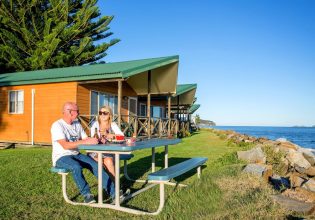
Batemans Bay’s location smack-bang between Sydney and Canberra has long made it a great place for a family holiday in a caravan....
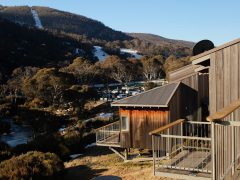
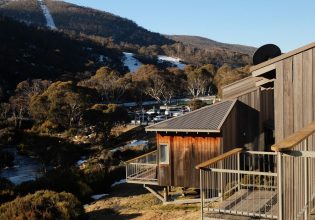
From scenic bush camps to design-driven Airbnbs, Thredbo accommodation offers magnificent stays in the thick of the action. An al...
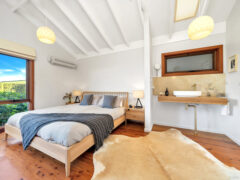
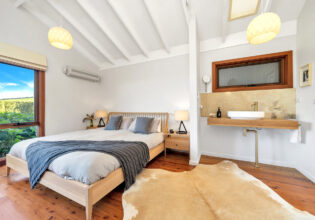
Kiama family accommodation has long been in demand for good reason; its coastal and rural charm easily evokes the quintessential f...
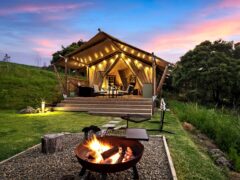
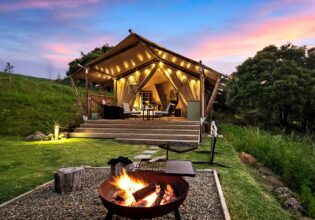
Take the guesswork out of your holiday planning and go with the best Kiama accommodation for all occasions. Kiama accommodation ...
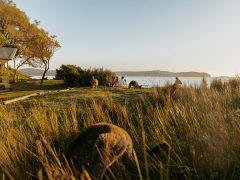
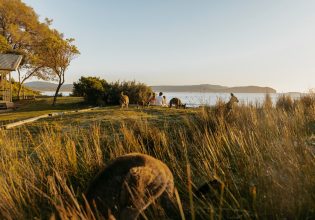
Stay grounded in a tent, swag or trailer while camping in Batemans Bay on the NSW South Coast. Batemans Bay camping appeals to ev...
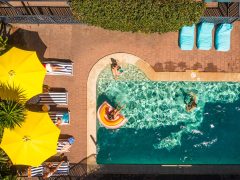
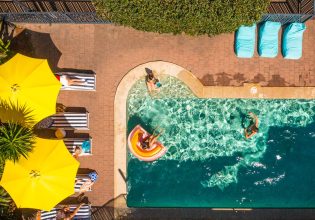
Relax in style at Byron Bay’s abundant array of accommodations, where beach bungalows and boutique hideaways capture the laid-ba...
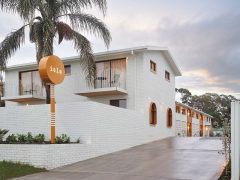
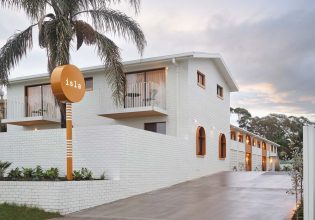
No matter what travelling style you have, there’s an accommodation for you in Batemans Bay. In Batemans Bay, you’ll find acco...
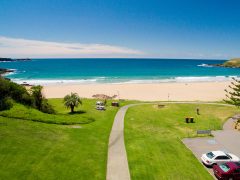
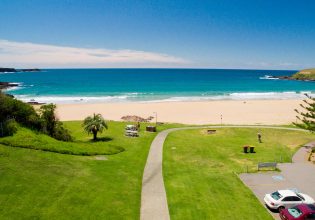
Pull your caravan into Kiama and set up camp for a relaxing but adventurous weekend. When destiny calls, it’s often the coastal...
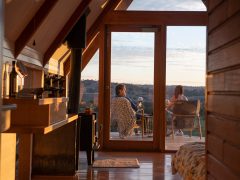
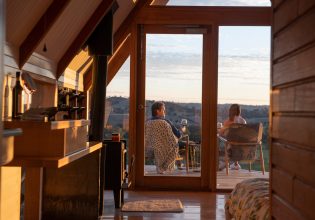
From boutique heritage-listed hotels perfect for two, to farm stays fit for outdoorsy families, these five Wagga Wagga accommodati...
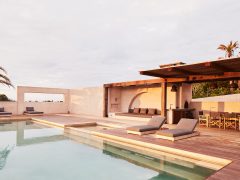

Escape the grind and find your bliss in Byron Bay’s most luxurious surroundings. Luxury accommodation in Byron Bay is all abou...


Reopening as part of the Handwritten Collection, a new global brand by Accor, the decidedly DECO Hotel Morris Sydney joins Wonil H...
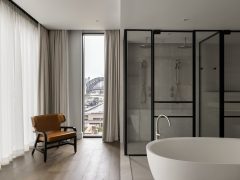
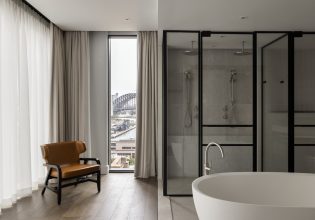
Sydney’s newest luxury hotel has opened in one of the city’s most beautiful heritage buildings. From state education to high-...
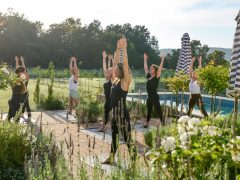
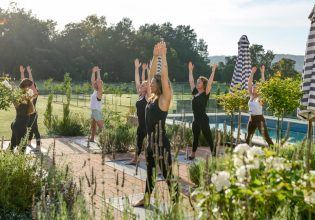
A wellness weekend in the Shoalhaven is designed to inspire women to stand tall. Stand Tall Retreats are designed for those seeki...


Saddle up that RV. It’s time for a caravan trip out west towards Broken Hill. Want to make that epic journey to the outback tow...
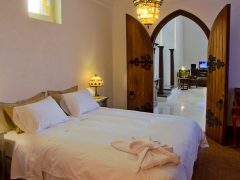
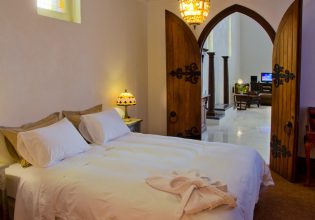
Planning a trip to Broken Hill? There's a stay to match all types of travellers that roll on into this town. The outback town has...

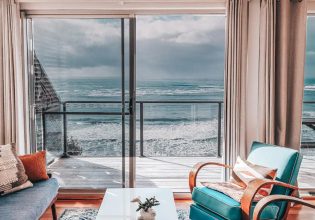
The breezy beach town of Yamba has soared in popularity over the last decade. The best way to enjoy its laid-back lifestyle? Renti...


The new luxury experiences on offer at The Anchorage Hotel & Spa are reason enough to visit this sophisticated coastal village...
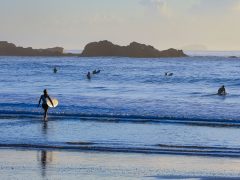

With a big focus on sustainability and community, a holiday at Reflections Coffs Harbour will leave you feeling good in more ways ...
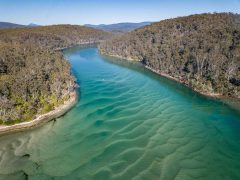
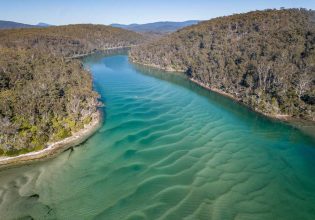
This attractive seaside town is full of surprises and a top spot to create fab family memories, hence its position at no.29 on you...
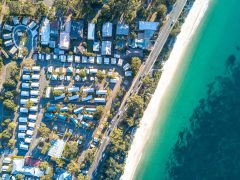

With 26 beaches and bays, a backdrop of ever-shifting sand dunes and large pockets of lush coastal forest, Port Stephens is a magn...

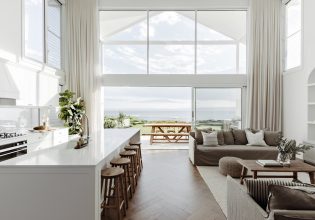
There’s accommodation to suit all kinds of travellers in Port Stephens – no matter your budget, needs or style. You can affor...
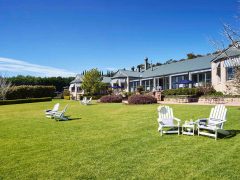

This boutique hotel on the Bouddi Peninsula with its own award-winning restaurant is the perfect retreat, as Quentin Long discover...
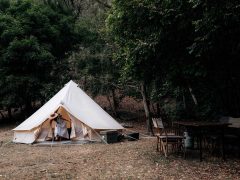

Whether it be in a swag, tent, caravan, cabin or luxury glamping, the Central Coast is an idyllic place to go camping. More than ...
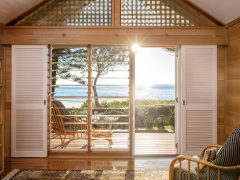
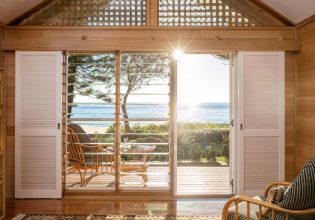
From the beach to the bush, and all along the picturesque coastline, we’ve rounded up the best places to stay on NSW’s Central...
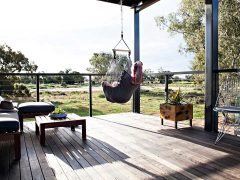

New life is being breathed into a family farm handed through generations with innovative practices, a collection of strategically ...
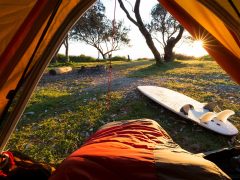
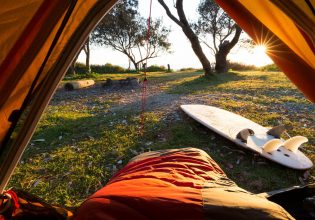
From spectacular sites with million-dollar ocean or river views to places to pull up your posh motorhome, here are our picks of th...
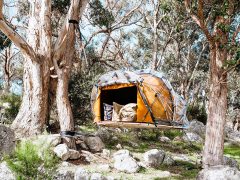
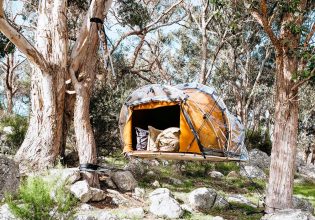
Suspended between gum trees in New England high country, this tiny bubbletent is one of three new ways to sleep under the stars. ...
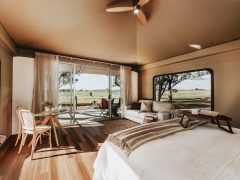

If you were to take a large-scale shot of the landscape from the skies above Mudgee, you’d see the wine town spread out like a p...


Whether you’re seeking exploration, adventure, pampering or the perfect hideaway, it’s time to set sail to your very own utopi...
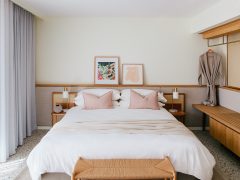
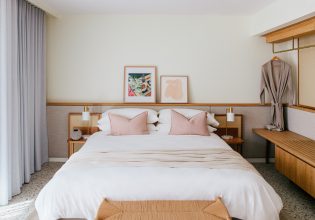
Searching for the best accommodation in Yamba? You’ve come to the right place. The laid-back beach town of Yamba has long been ...
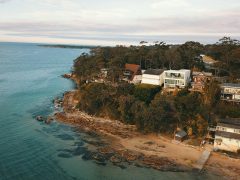
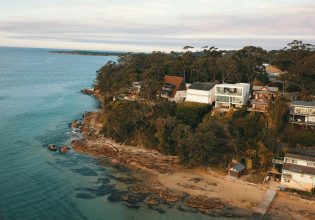
Hop on the train to Cronulla and the ferry to Bundeena for a close escape from Sydney. Although Bundeena is just a short ferry ri...

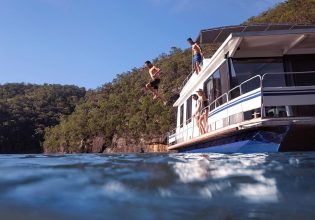
Whether you’re organising a get-together with extended family, planning a weekend getaway with a group of friends, or looking fo...
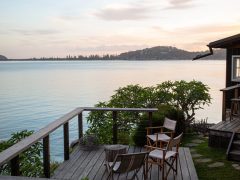
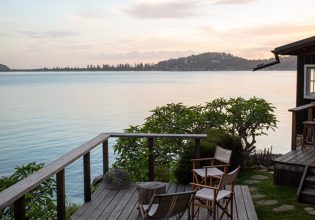
Discover the most unique stays in NSW... We've revealed our pick of 100 unique stays across Australia and below you'll find the 2...


We’ve rounded up the best hotels, resorts and Airbnbs in Coffs Harbour. From an absolute beachfront home that should be on the ...

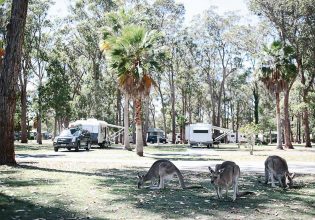
Escape the city at these top camping grounds around Coffs Harbour. The thought of stargazing under a sky freckled with light, sle...
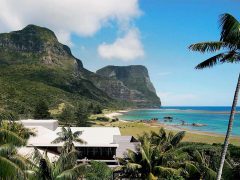

From luxurious suites with private hot tubs to comfy, conveniently located budget apartments, the range of accommodation options o...
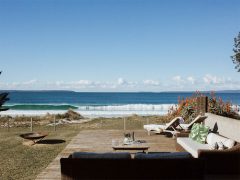
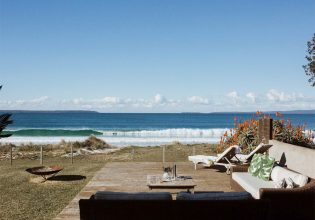
If you’re heading to the South Coast of NSW, make Jervis Bay your base. There’s a reason why Jervis Bay gets a lot of love on...
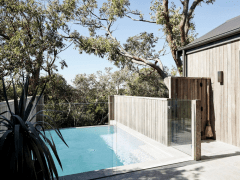
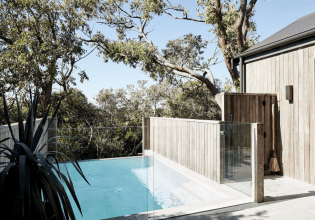
Make the most of your Byron holiday by staying right on the sand. The best Byron Bay beach houses are the ones that are as unders...
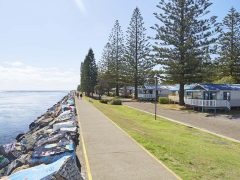
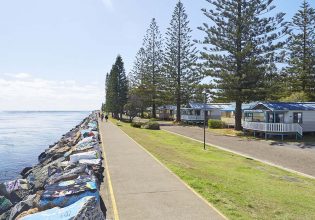
Campers will rejoice at the multitude of camping options on offer around Port Macquarie. From sites next to the ocean to riversid...
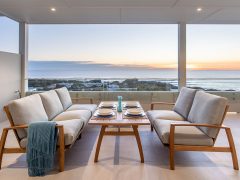
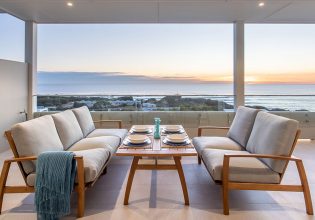
Port Macquarie is no longer overlooked by road-trippers making a beeline for Brisbane or Sydney. Initially conceived as Australia...
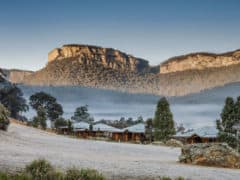
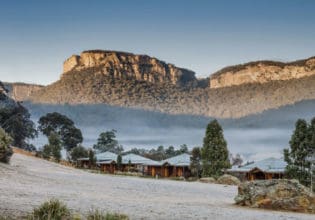
NSW escape plan: stay in a luxury eco lodge, a beach-chic hang or the ultimate heritage homestead. Halcyon House, Cabarita Beach ...
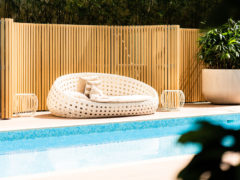
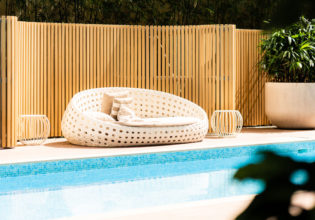
Feeling the urge to escape your neighbourhood and discover a different part of Sydney? Here's why Parramatta should be bumped up y...
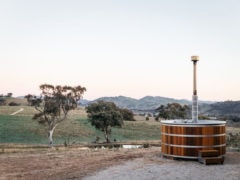
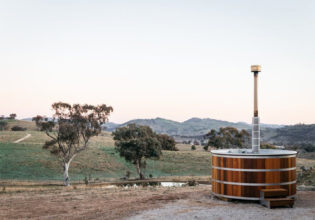
From luxury bell tents pitched on hillsides and farmlands to camping alongside the river, in the bush or closer to town – Mudgee...
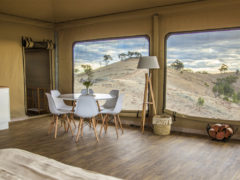

Here’s where to rest your head between winery visits and epicurean fare in Mudgee. The streetscapes of Mudgee ooze nineteenth-c...
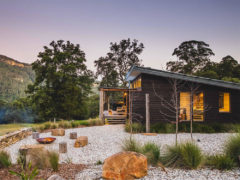
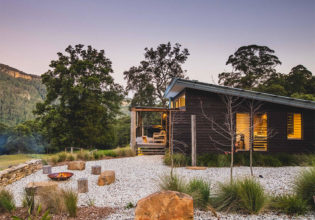
Spend the night at Barranca in Kangaroo Valley and learn a lesson in off-grid opulence. Why did it take me so long to head to Kan...

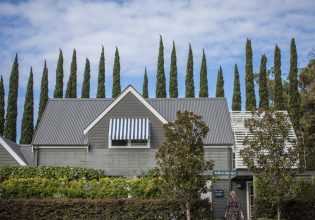
Soak up some seriously serene Central Coast bliss with our top pick of boutique hotels. From Terrigal, Avoca, Copacabana and Macm...


From a weatherboard cottage in the centre of town to an architectural icon and all manner of elegant country estates. A trip to t...
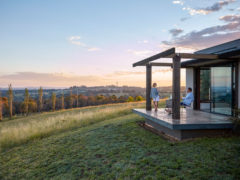
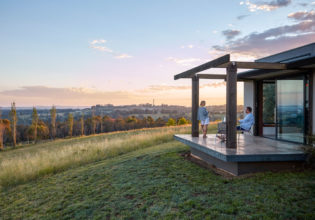
Fine food, cool-climate wine and vineyard views for days: there’s romance aplenty to be had in Orange and a range of accommodati...
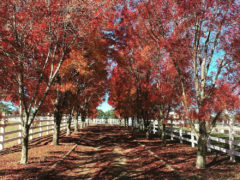
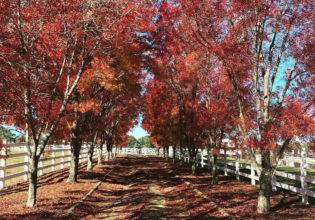
It's raining when I arrive at the gates of Eden Equine in Bilpin, a 90-minute drive along the Bells Line of Road from Sydney. Cons...
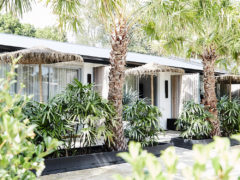

Byron Bay is as romantic as it is beautiful, making it the perfect place to celebrate with your significant other. Now you’ve p...
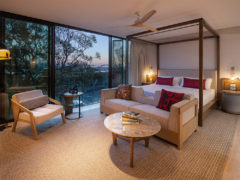
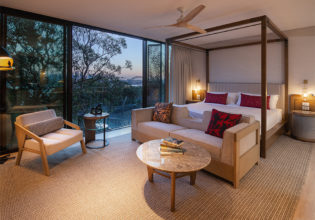
Privileged access to the creatures of the bush – and the jungle – comes with luxe inclusions, expansive harbour views and a co...

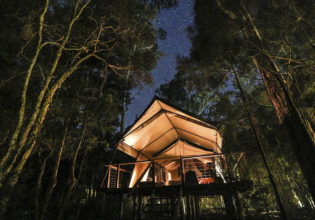
Whilst we all love a good old-fashioned camp out in the elements, we can’t really go past a romantic getaway that combines the b...
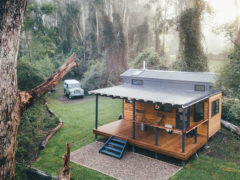
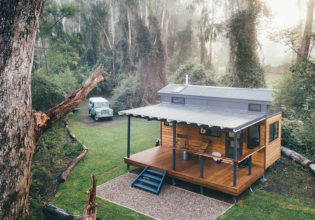
In need of an escape from the daily 9-5? Want to get out of the city and get back to nature? Well, haven’t we got a treat for yo...
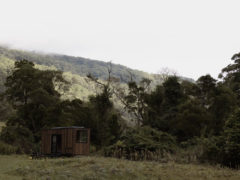
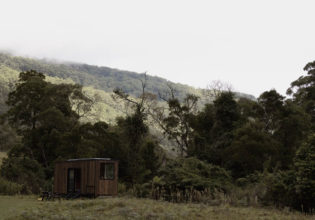
We nabbed a night in one of the most in-demand off-grid huts in Australia & here’s what did (and didn’t) go down Imagine ...
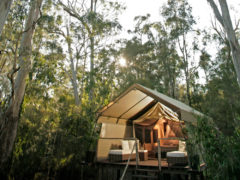
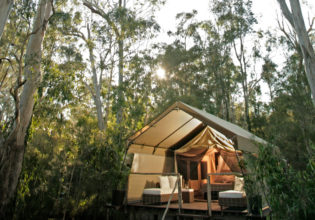
From tiny houses to luxury villas and safari-style tents, accommodation on the white-sand fringed south coast of New South Wales i...
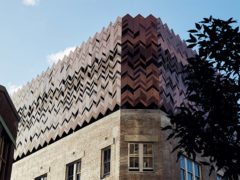
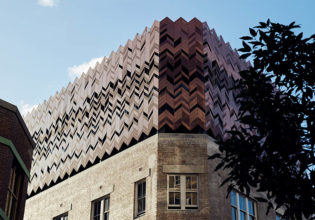
In the space of five months, one pocket of Surry Hills received a major boost in the heritage building-turned-cultural destination...
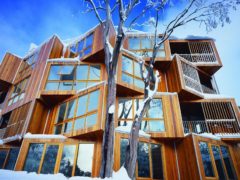
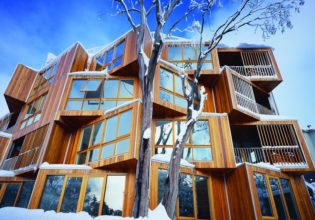
Planning a snow holiday in Australia? You really should consider these cool, chic and crazy accommodation options. From lovely lod...
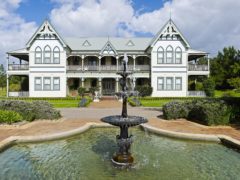
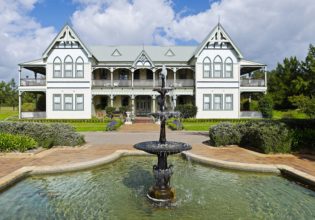
There are more accommodation options in the Hunter Valley than you can poke a slice of smelly cheese at. for your holidaying pleas...


Overnight stays at zoos are becoming popular for humans, too. Laura Boness finds out why... A panic button is not a feature of mo...
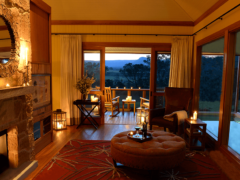
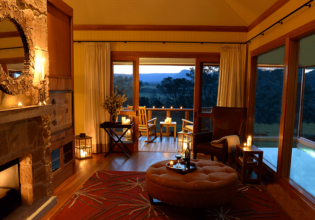
It’s billed as Australia’s most luxurious escape, owned by one of the world’s most upmarket airlines, so you’d expect Wo...
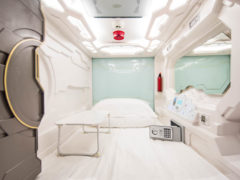
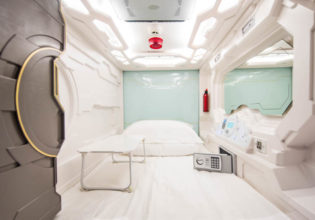
Is there enough room in Sydney’s first Japanese-style mini-stay, The Capsule Hotel, to swing a cat? Steve Madgwick takes the que...
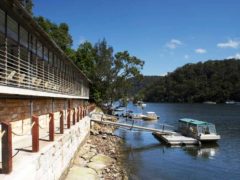
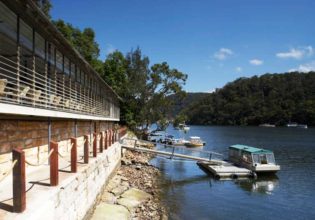
Perched on the banks of the Hawkesbury river north of Sydney, AT wines and dines along the waterline at Berowra Waters Inn for a d...
You’re spoilt for choice for top-notch places to eat in NSW starting with dining in the harbour city. Grab breakfast in Sydney’s Bondi, lunch at iconic waterside restaurant Catalina and dinner harbour side at Quay; consistently voted as one of Sydney’s best restaurants.
Some stellar regional dining hot spots are putting small-towns on the map, like Paper Daisy in Cabarita Beach and Fleet at Brunswick Heads, both on the North Coast of NSW. Likewise if you’re heading south, check out Biota on the NSW South Coast.


Country hospitality is on the pour at these top Orange watering holes. The central NSW town of Orange is well aware that once vis...


You’re never too far from a well-brewed coffee and delicious meal in Orange. It’s no great revelation that the fertile lands ...

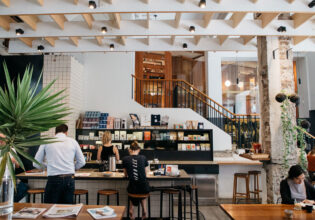
The dynamic cafe culture in Surry Hills sees both classic brunch favourites and eclectic, experimental breakfast dishes thrive. S...
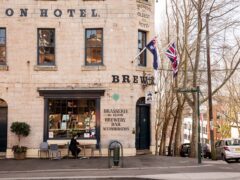
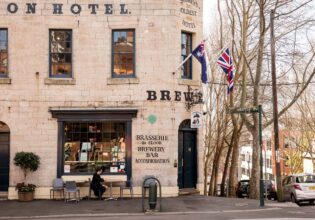
The pubs and breweries of The Rocks blend aspects of Australia’s colonial period with the contemporary, celebrating Sydney's dri...
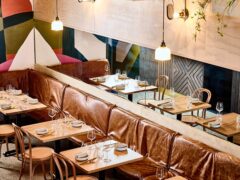
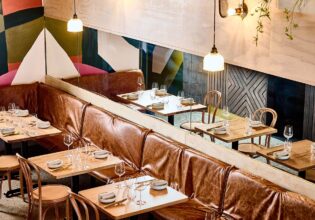
It’s time to get acquainted with Newcastle’s best dining destinations. The evolution of Newcastle from industrial to sophisti...
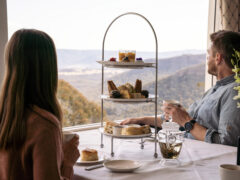
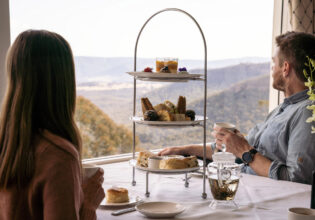
Top off your afternoon with one of these Blue Mountains high teas, whether you seek a luxurious setting with sprawling mountain vi...
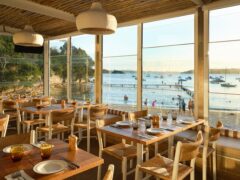
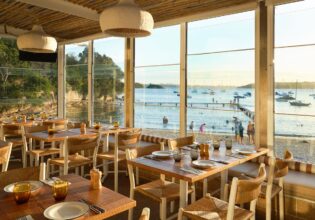
Deciding to kickstart your day with breakfast at Manly is always a great idea. The tricky part, however, is deciding which of the ...


Renowned for its fashion and culture, Paddington offers leisurely brunch spots, freshly baked goods and specialty coffee that will...


For a family foodie trip that’ll tick everyone’s boxes, head straight for the Northern Rivers. From seaside Yamba to riversid...


From the sultry Edwin Wine Bar and Cellar in Melbourne to the Asian fusion of Perth’s Miss Mi, these next-generation hotel resta...


The briny liquid contained in just-shucked Merimbula oysters is like the Champagne of the sea. Gain a new appreciation of this del...

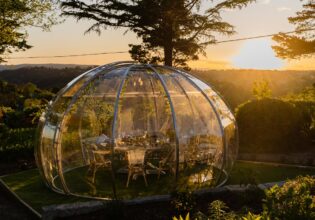
For Leura-based explorations of the Blue Mountains, these seven cafes will top up your caffeine levels and fortify your day with d...


Caffeinate ahead of a day exploring the Blue Mountains at these excellent Katoomba cafes. Katoomba is serious about starting the ...
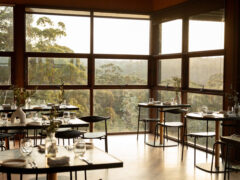
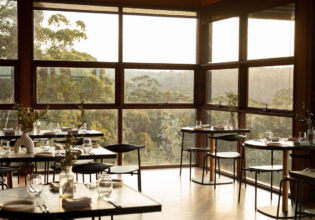
Dining at this Sapphire Coast gem of a town delivers a fair few surprises. Whether it’s fish and chips, pizza or pasta, cocktai...
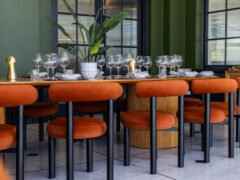
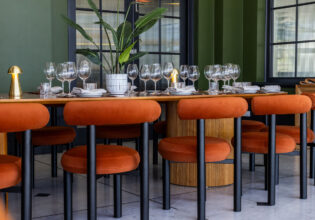
Map your culinary journey around the Central Coast with these epic restaurants and cafes. The region may not immediately come to ...


Inspired by the stunning landscape and rich produce of the region, these beautiful Blue Mountains restaurants invite diners to rel...

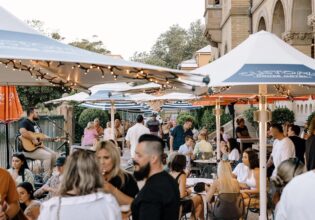
The city of Newcastle’s drinks scene has come of age. Here are some top places for a tipple. A few decades ago, knock-off drink...
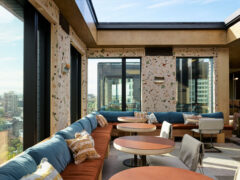
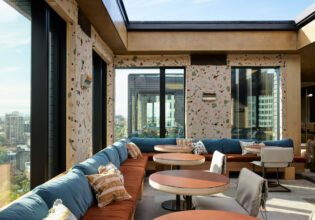
Nestled in the heart of Sydney, the restaurant scene in Surry Hills has become an unparalleled dining destination. While Sydney i...


Scones, petit fours and (of course) a perfectly brewed tea. Decadent high tea experiences are something Newcastle does exceptional...


A great weekend away in NSW wine country calls for an equally excellent food scene; the Hunter Valley delivers on both. It’s a ...
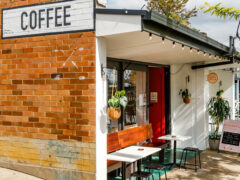
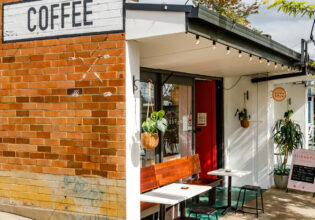
From excellent coffee to comforting dishes and cheerful hospitality, these much-loved Blue Mountains cafes will fuel, nourish and ...


Blackheath has become a beacon of Blue Mountains culinary excellence with a concise but considered list of places to wine and dine...


Eat your way along the Tweed coast with these fantastic restaurants that showcase the region’s incredible produce. From the pri...


Whether you fancy a fine dining affair or a more low-key night out, you’ll find a menu to whet your appetite in the beautiful mo...


Whatever you think of this craze to graze, we see the concept of #girldinners as a low-maintenance easy meal. Here is the ultimate...


To make it to the top, a Hunter Valley cafe needs to be the kind of place that’s run by a brigade of talented next-generation yo...

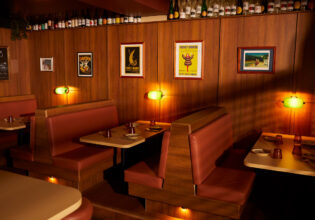
Eat, drink and enjoy these Tweed Heads restaurants and surrounding eateries that cater to any mood. Whether you’re keen to froc...


A region not short of good coffee and a baked treat to go with it, these casual eateries from Tweed Heads cafes to incredible coas...
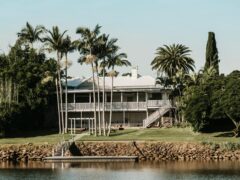
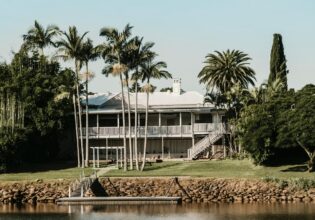
Tuck into the beautiful produce of the Tweed Valley at these Murwillumbah restaurants that showcase both provenance and culinary t...


While road-trippers might have once passed through Newcastle on their way to wine and dine in the Hunter Valley, the city is now s...


Elevate all that liquid gold with the finest Hunter Valley chocolate and cheese. Milk and cookies. Beer and burgers. Coffee and c...


Bathurst offers a perfect combination of history, culture, and delectable cuisine, making it a pleasantly surprising destination f...
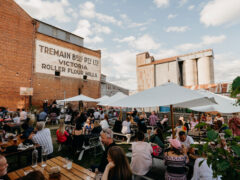
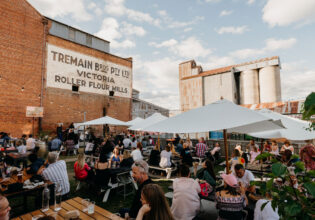
Step back in time and experience the soul of Aussie culture as you explore the rich tapestry of traditional and modern Bathurst pu...
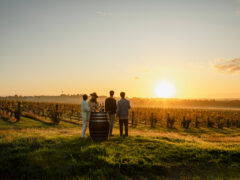

Visit NSW Wine Country to find some of the best Hunter Valley wineries to suit every occasion. A comprehensive guide to the best ...


Bathurst offers a unique dining experience that combines the town’s rich history, vibrant culture, and delicious cafe cuisine, m...


Byron Bay’s cafes are up there with some of the best in the country. Here is a list of some of our favourites. Byron Bay is on...


From paddock to plate, Griffith and the Riverina are at the forefront of the sustainable food movement. Griffith restaurants have...

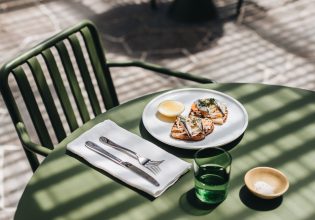
Be it a slick bar serving dumplings or a hidden gem where a Michelin-trained chef is at the helm, these are the best Batemans Bay ...
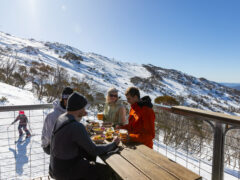
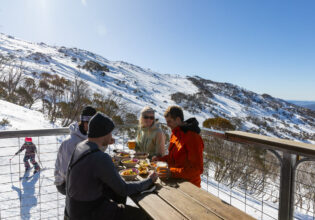
Enjoy stellar schnapps, international cuisine and lively village atmosphere at the best Thredbo restaurants. From an on-mountain...


Get along to beautiful Griffith to relish in the region’s citrus harvest, explore elegant local gardens, and discover incredible...


Keeping tiny humans fuelled while on tour is a breeze thanks to the best family-friendly restaurants in Sydney. Sydneysiders love...


Sydneysiders can’t get enough of a bottomless brunch. Is brunch even brunch without an offering of bottomless beverages to boot...


Slip into holiday mode and snack around town at these Kiama cafes. Looking for the best of the Kiama cafe scene, a must-have coff...


If you can find their entrances, the best hidden bars in Sydney beg you to let your hair down. Quirky decor, legendary cocktails ...
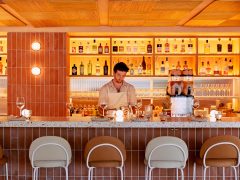
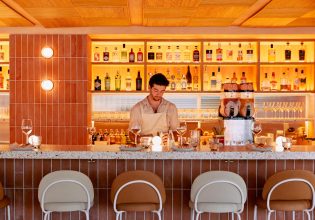
A bunch of new drinking dens have joined Byron’s popular bar scene offering holidaymakers plenty of options for sophisticated si...
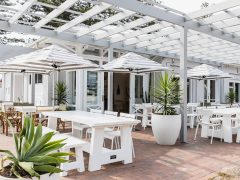
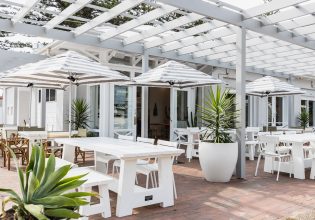
When on holiday, enjoying a fantastic feed and exploring the region is a must. Fortunately for you, Kiama delivers tasty opportuni...
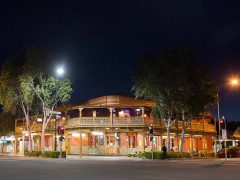
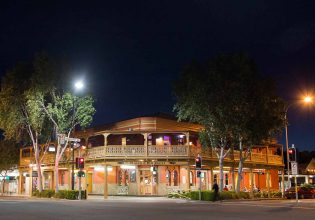
Whether you’re on the hunt for a cool little indie taproom or a reliable local pub that dishes up all your favourite comfort foo...

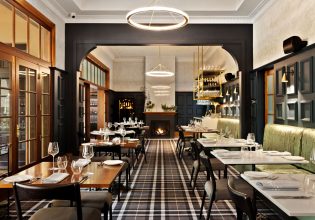
Is Mudgee too mainstream? Already peeled Orange? When finding your next foodie destination don’t overlook the Riverina region of...


With a thriving regional population and proximity to some of the best Riverina producers, Wagga Wagga has naturally developed a ca...


Come to the Northern Rivers for its incredible nature, beautiful waves and beaches, but stay for the food. It is not only the pri...
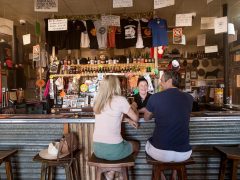
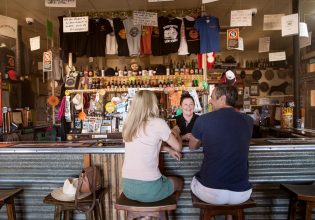
Sinking a cold one on a hot afternoon hits differently in the outback - particularly at these Broken Hill pubs and clubs. If you�...


It might feel like you’re in the middle of nowhere, but the number of restaurants open in Broken Hill will have you stunned (and...
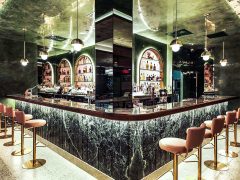

The ultimate guide to the best bars in Cronulla in Sydney's south. Whether you’re in the mood for a drink at a dive bar or supp...


Long-time local Carla Grossetti suggests some of the best restaurants in Cronulla no matter the occasion. Locals have pretty stro...


The ultimate guide to the best cafes in Cronulla, the beach-chic suburb in the Sutherland Shire. The best of Cronulla's cafes off...

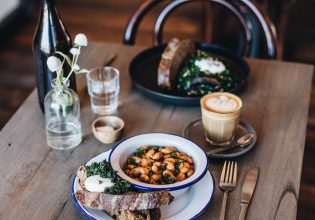
From bakeries to bistros to hip cafes in heritage buildings and spaces with their own market garden, Bowral cafes are a celebratio...

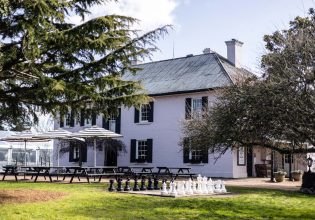
A preference when it comes to choosing the finest places for a tipple is deeply personal, so we decided we’re not just going to ...


Whether you’re road-tripping with the family, or looking for romance, make sure you know the best Bowral restaurants to book bef...

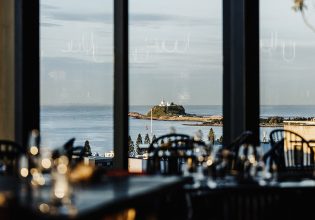
It’s no secret that Newcastle has been in a period of radical change over the past few years, particularly when it comes to its ...

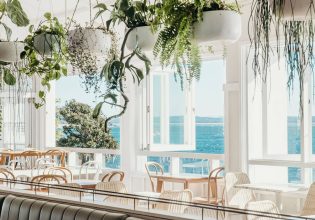
From fine dining to fish and chips and everything in between, the Port Stephens dining scene is diverse and ever-growing. As you�...
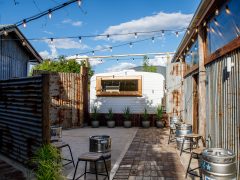

Hopheads and foodies alike will be in heaven at these six Mudgee pubs and Mudgee breweries. From craft beer bars that promise hel...
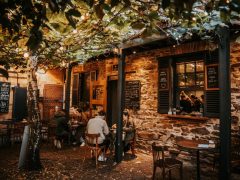

There’s so much more to Mudgee than just world-class wines as our list of places to breakfast and brunch attests. There are no ...


From cafes with house-fermented kombucha to heritage-listed pubs with leafy beer gardens, and delis helmed by award-winning chefs,...


Whether you’re planning a full-on eating itinerary or just stopping through town on your way to somewhere else, these are ...


Plan your next visit to the Illawarra region around where to eat and drink in Wollongong. Wollongong has, in its own quiet way, b...
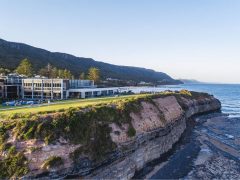
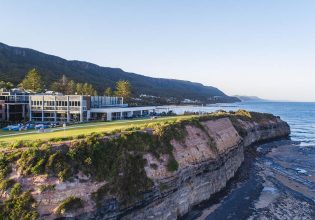
Discover our pick of the best bars and pubs in Wollongong Much of Wollongong’s charm lies in the friendliness of the locals, wh...


The climate in Coffs Harbour and the bounty that it yields has led to some phenomenal food and drink experiences. With a focus on...


You’ve explored the beautiful beaches. Now where to for coffee, brunch and lunch? Planning a jaunt to Jervis Bay? Be it coffee ...


The pull of an epicurean getaway has never been stronger in jewel-coloured Jervis Bay. From a romantic candlelit dinner in a rest...


Gorge on the freshest locally caught fish, the best daily baked bread and stellar sunsets on this island paradise This tropical, ...


Award-winning late disgorge cider, craft gin cocktails and beers from the largest independently-owned farm-based brewery on Austra...
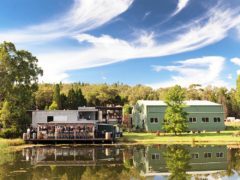

Mudgee over delivers on everything from fine-dining feasts and brunch-focused cafes to sophisticated wine bars, cosy cellar doors ...
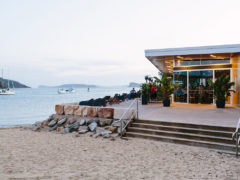
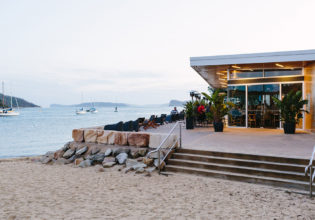
New and old drinking dens are spicing things up on the Central Coast, offering holidaymakers plenty of options for bar-hopping in ...
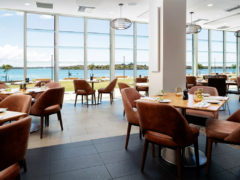
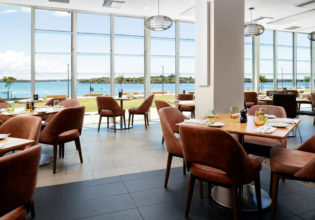
A bunch of new (and old) drinking dens are spicing things up in Port Macquarie, offering holidaymakers plenty of options for bar-h...


Gone are the days when the only coffee you could source in Port Macquarie came from a soul-crushing chain store, now you’ll find...
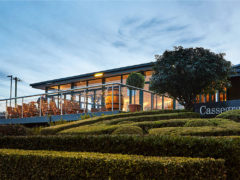
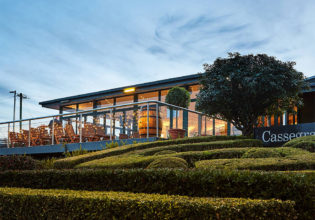
It seems the operators of Port Macquarie struggle to do anything by halves, demonstrated best in their offering of fully-fledged w...


From hip cafes tucked into heritage buildings to hatted restaurants and vineyards, our pick of where to eat in the Orange region. ...


Taverna fuses North Coast NSW’s sleepy beach charm with old-world Greece. Craig Tansley samples the region’s best new offering...


AT’s Alissa Jenkins spends a day in the Hunter Valley at Bimbadgen Winery. Driving north out of Sydney, it doesn’t take long ...
There are plenty of tours and packages to make the most of your NSW holiday. Try whale watching during whale season in Byron Bay or a day trip to the Blue Mountains taking in the highlights such as Wentworth Falls and the Three Sisters. Book a wine tasting tour in the Hunter Valley to taste award-winning wines in a bucolic setting.


Be guided through Orange’s top drops on a wine tour that puts you in the passenger seat. Embarking on a solo exploration of the...
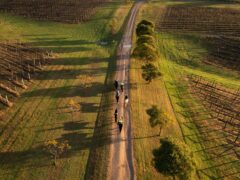
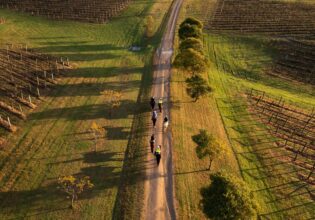
Let somebody else track the time with an expert-led Hunter Valley wine tour. Hunter Valley vineyards are pouring some of the coun...
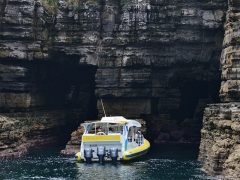
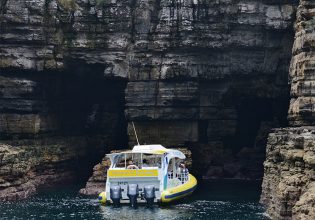
Discover more about Jervis Bay by booking an expert-led tour of the landscape. It’s easy to understand why Jervis Bay is consid...
© Australian Traveller Media 2024. All rights reserved.
